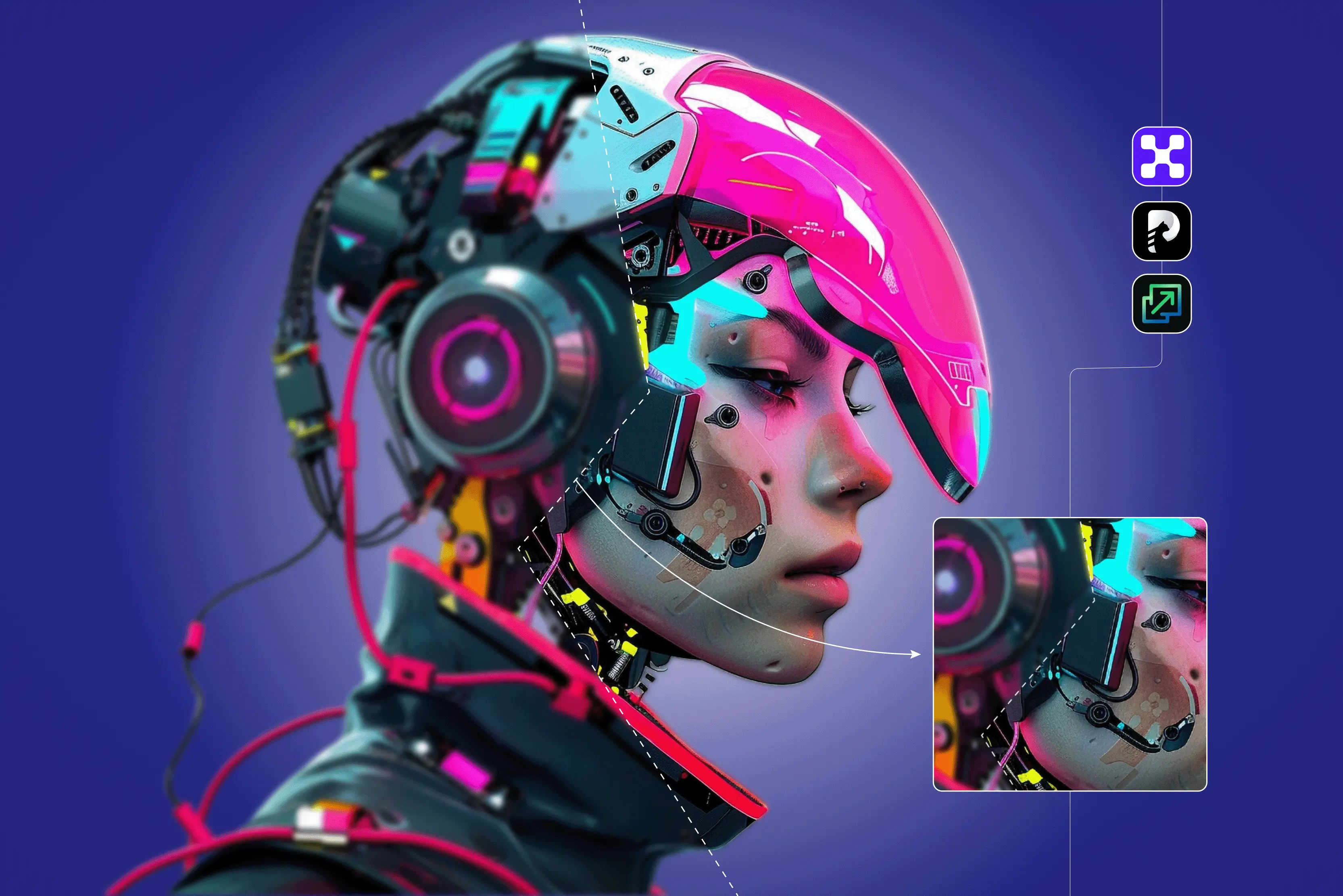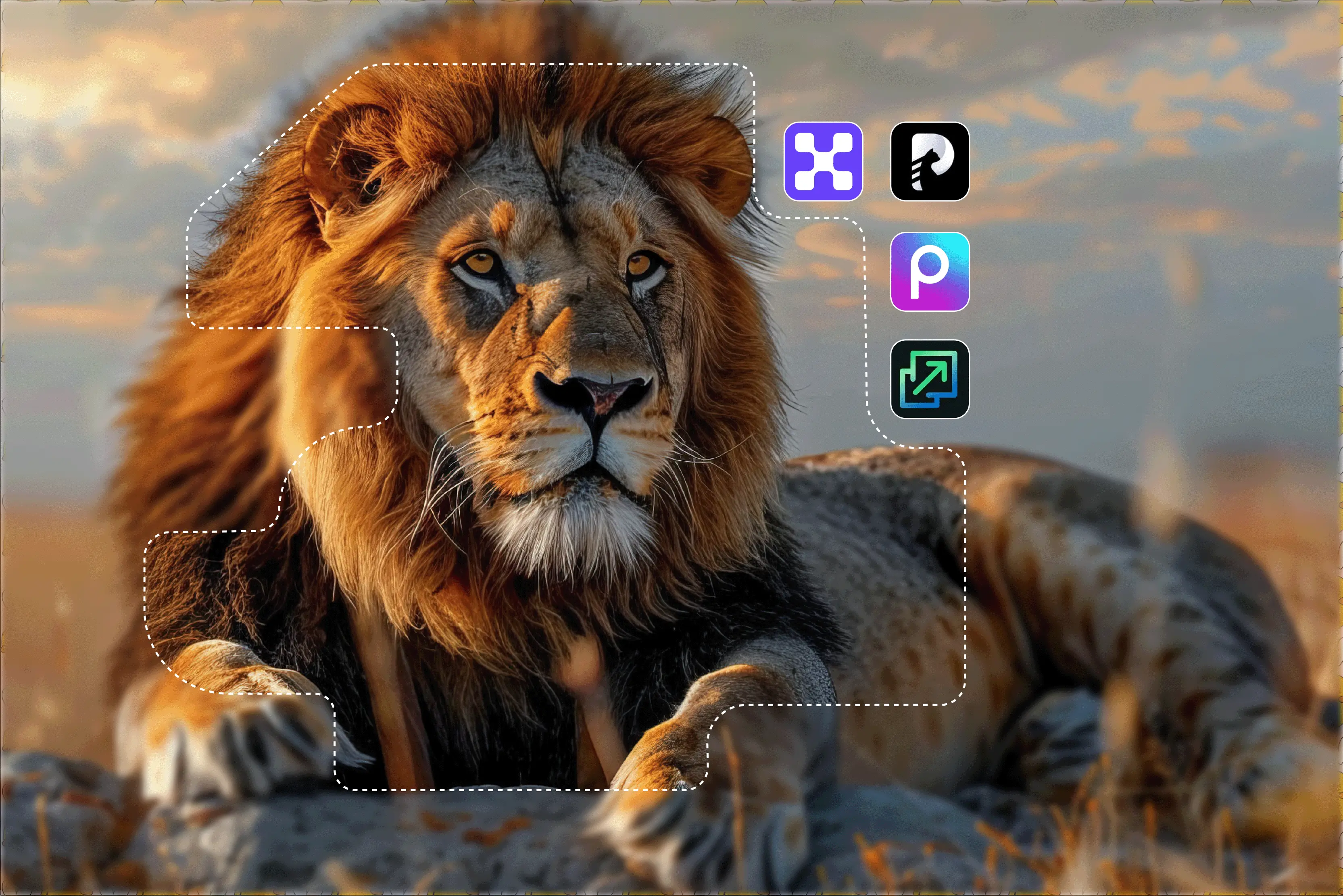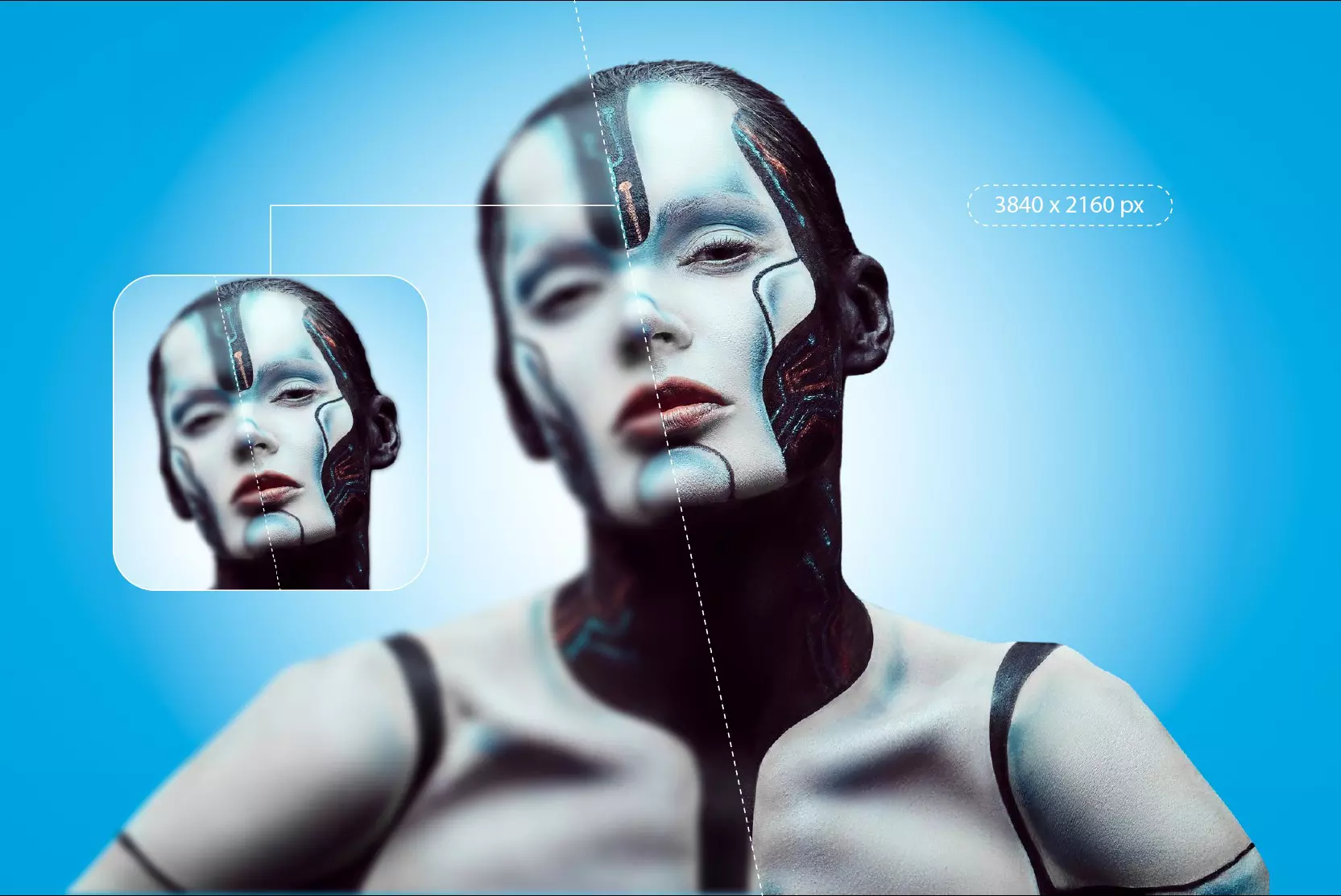You try to zoom into an image or enlarge it for a print, but it becomes blurry, jagged, or pixelated. This is one of the most common problems faced by all with low-resolution images, whether it’s an old photo or a small, low-resolution photo; enlarging leads to a loss of quality.
But what if you could turn the same image into a high-resolution one just by upscaling it? Let’s understand what image upscaling is and how it works with traditional and AI tools.
While traditional upscaling stretches the pixels by interpolating them, AI tools reconstruct details by preserving quality. In this blog, I’ll walk you through the insights of how to upscale an image with tools and how to follow the best practices.
What is image upscaling?
Image upscaling is the method of increasing the dimensions and adding new pixels to an image. When you try to enlarge an image by stretching it beyond its original resolution, it becomes pixelated.
It’s essential to understand the distinction between resizing and upscaling. Resizing simply changes the image dimensions and often leads to a loss in quality, especially while increasing size.
Traditional image upscaling vs AI image upscaling
Traditional image upscalers like Photoshop and other software use interpolation methods such as:
- Nearest Neighbor: Fast, but the image ends up with jagged edges
- Bilinear: Makes things look smoother, but you lose some sharpness and detail.
- Bicubic: A step up from bilinear—images look nicer, but if you zoom in 4x or 8x, it still gets a bit blurry.
These traditional methods come with several disadvantages, such as blurry edges and jagged lines.
These days, Photoshop has stepped up its game with AI plugins like Super Zoom, Preserve Details 2.0, and Neural Filters that use deep learning to upscale images. On the other hand, AI image upscaling works on learned patterns and adds pixels to the missing details in the image.
Benefits of image upscaling include;
- Preserving textures and fine details.
- Enhancing the facial and background elements.
- Reducing noise and grain from old or compressed images.
How do I upscale an image with AI tools?
Traditionally, if you wanted to upscale an image, you had to rely on tools like Photoshop, GIMP, or other software. Image upscaling using traditional methods results in blurry, stretched, or jagged pixels.
But with AI-powered upscalers, image upscaling has totally changed. These tools are smarter than the traditional ones, they use deep learning to understand what your image should look like, picking up on patterns, textures, and edges to fill in the missing pieces naturally.
Here are some of the best-performing AI image upscaling tools I have tested below:
But with AI-powered upscalers, image upscaling has totally changed. These tools are smarter than the traditional ones, they use deep learning to understand what your image should look like, picking up on patterns, textures, and edges to fill in the missing pieces naturally. Here are some of the best-performing AI image upscaling tools I have tested below:
1. AI image upscaler by Pixelbin

AI Image upscaler by Pixelbin is one of the best options if you are searching for a simple and beginner-friendly upscaling tool. I used an old, faded image, and Pixelbin instantly made it clearer and crisper without over-sharpening the image. What I loved about the tool;
- Free 4x and 8x sign-up credits.
- Quick processing speed, results delivered in a few seconds.
- Maintains a clear and sharp texture by preserving image details.
- Beginner-friendly interface, just upload your image, and the tool will upscale it automatically using AI algorithms.
Steps to upscale the image in Pixelbin
Step 1: Head over to Pixelbin.io.
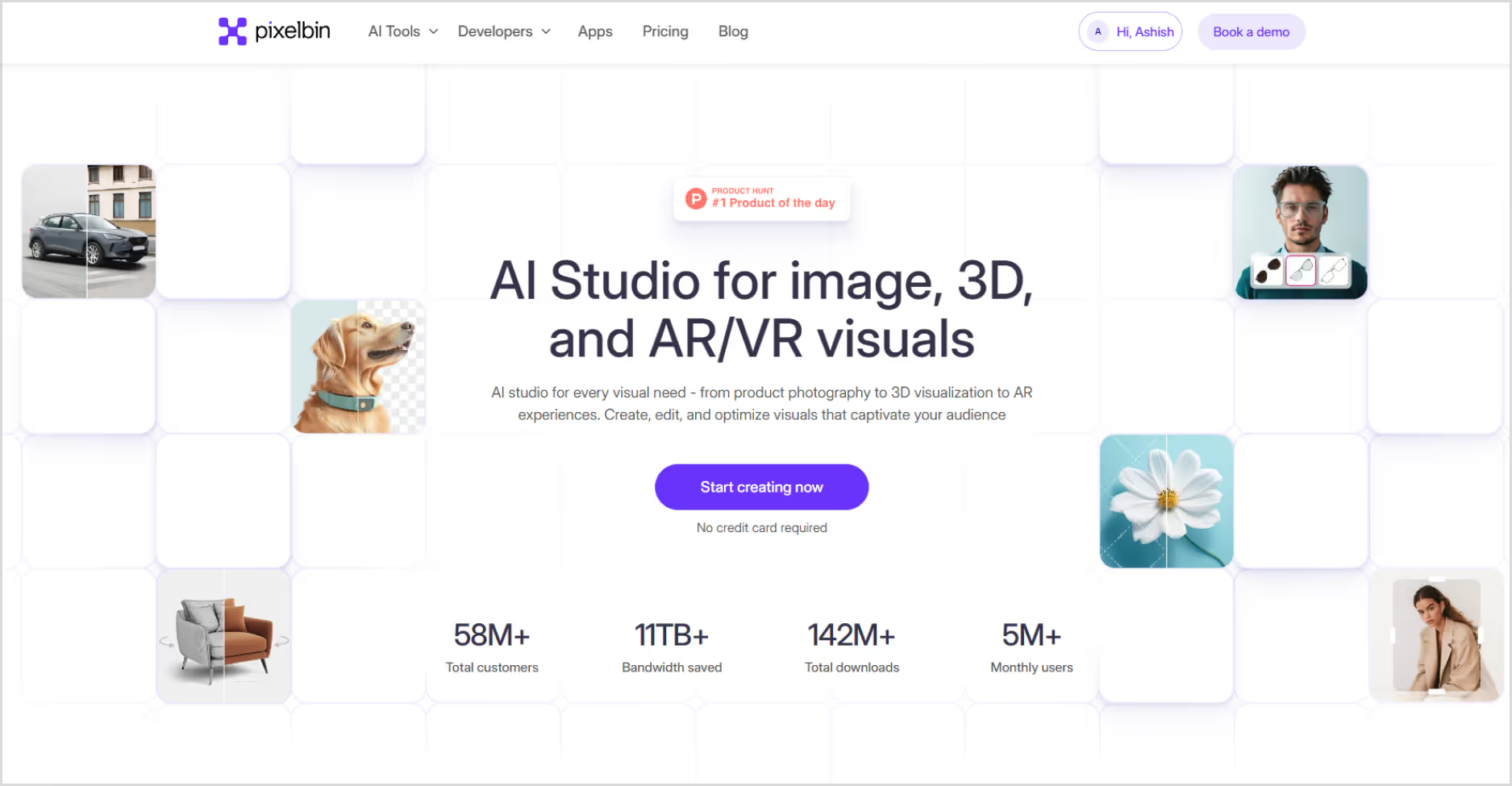
Step 2: Upload your image by selecting it from your device or simply pasting the image URL. As batch processing is a feature, you can add up to 10 images in one go.
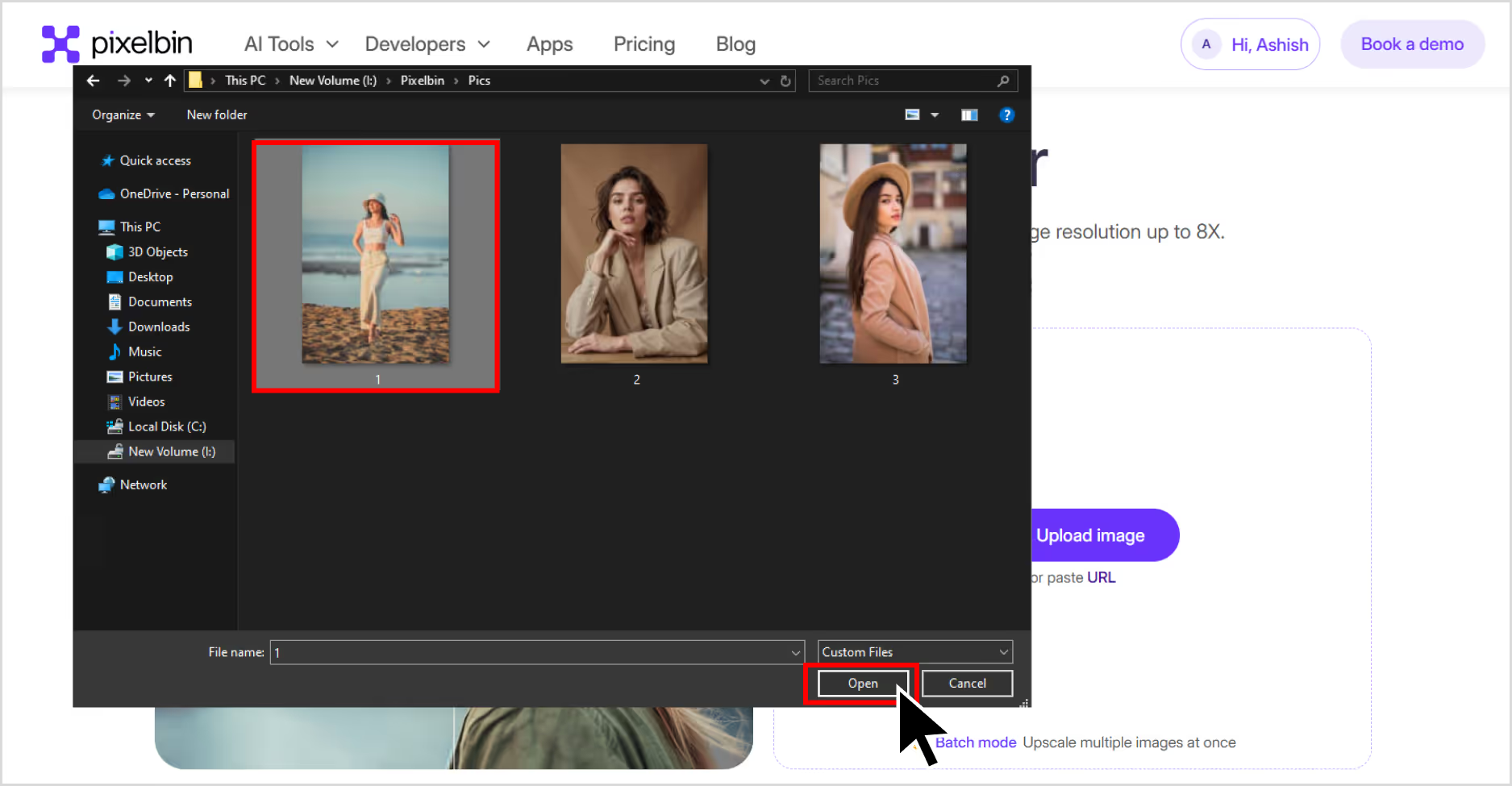
Step 3: Choose your image upscale size—2x, 4x, or 8x.
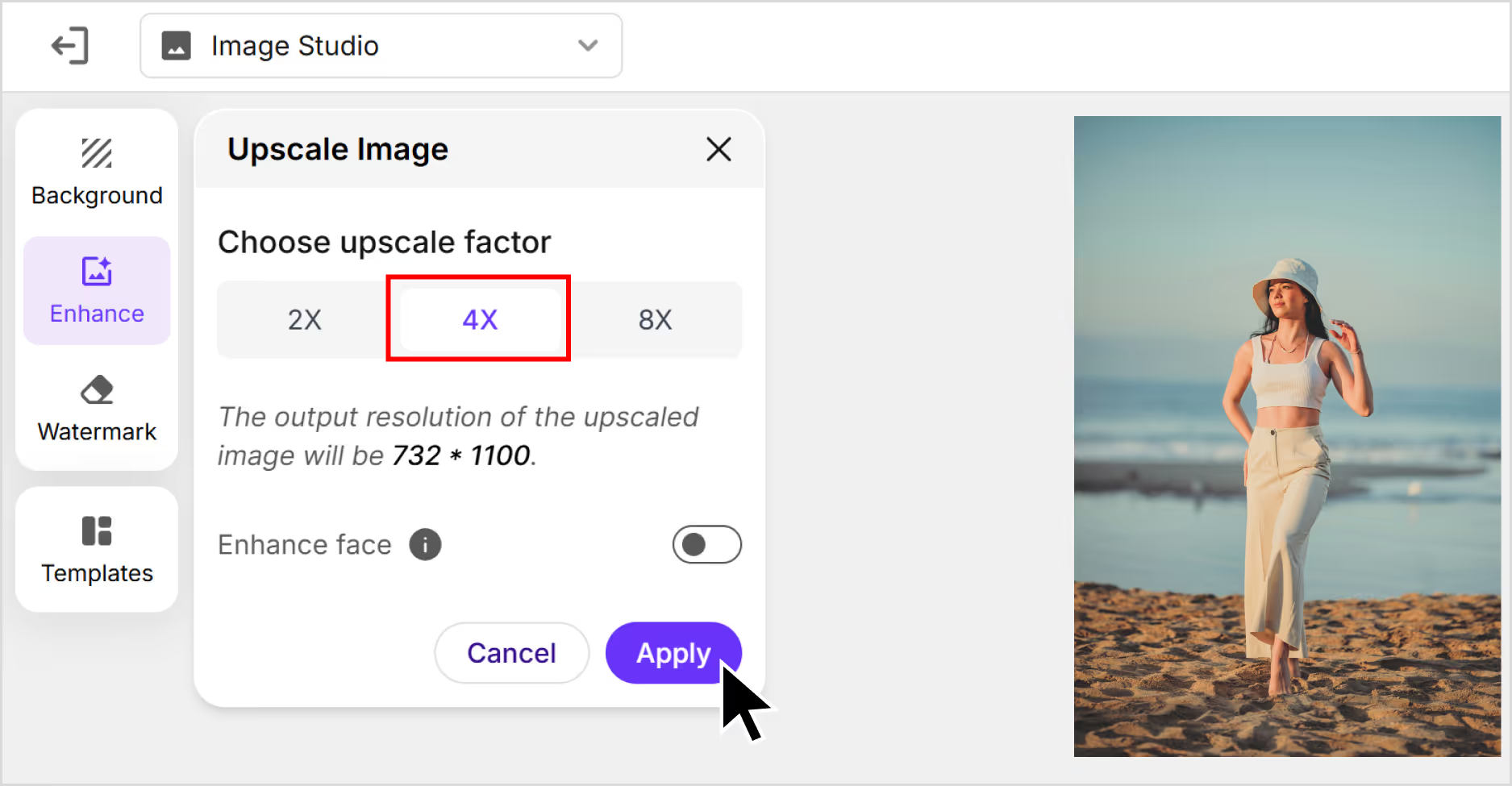
Step 4: You can adjust saturation, brightness, and hue under the “Adjust” tab. You can also remove or change the background, add new templates, and remove the watermark. You will find all these options once you sign up. You will get redirected to the pixelbin console, and over there, you will find all the options.
.avif)
Step 5: Preview the image and select 'Download' to save it in SD or HD resolution.
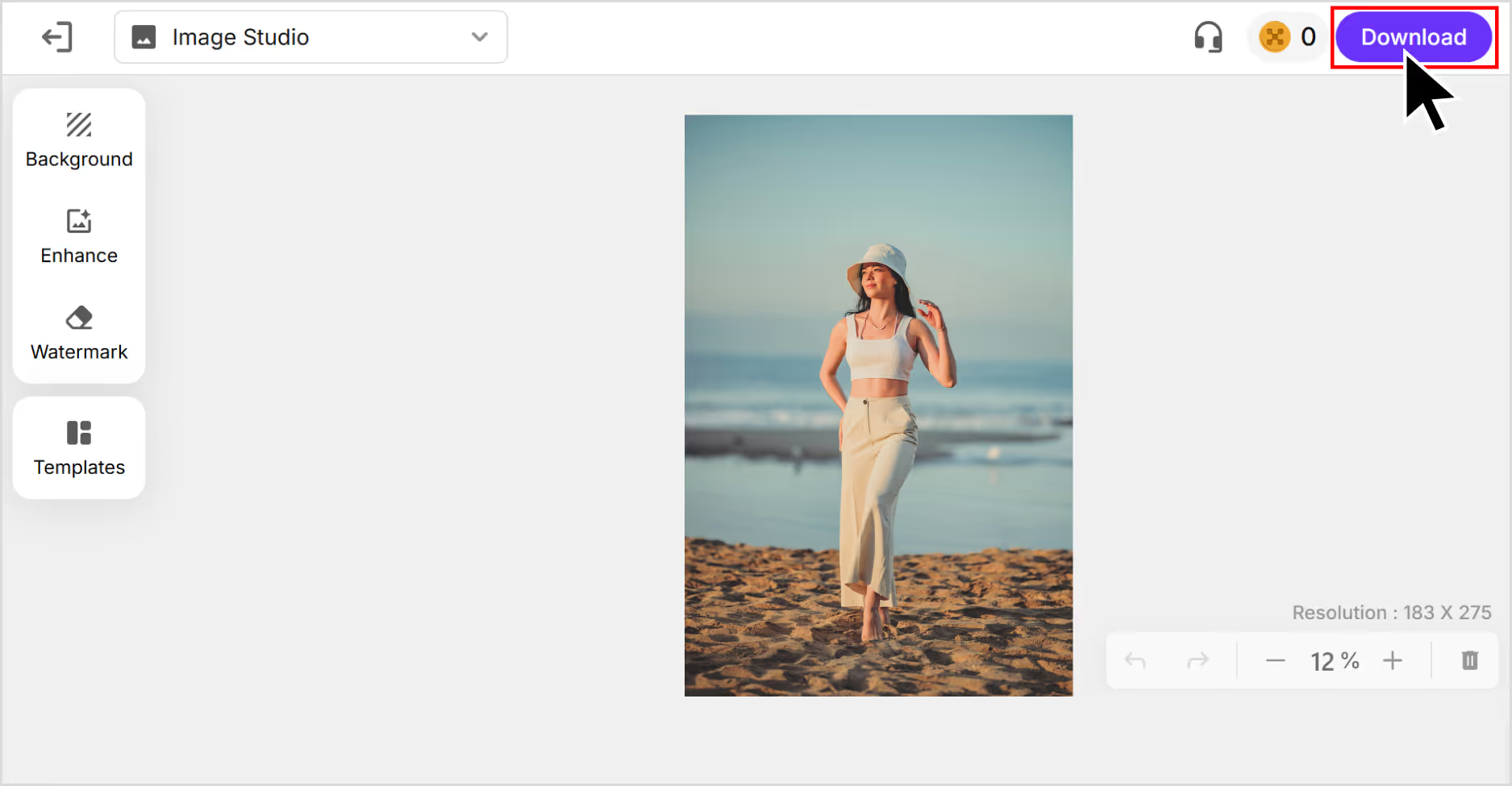
2. Upscale.media

If you just want to upscale your image without any hassle, then Upscale.media is the ideal option. I found it super helpful for upscaling old pictures. I tested it with an old travel selfie that had a bit of blur and soft edges. Upscale. Upscale.media cleaned it up quickly, and I didn’t even need to create an account. What I liked about the tool;
- You don’t need to sign up or install anything—just drag and drop the image.
- It’s quick; my result came through in seconds.
- AI noise reduction works automatically, which cleans up the grains.
- The interface is clean and beginner-friendly.
Steps to upscale the image in Upscale.media
Step 1: Go to Upscale.media.
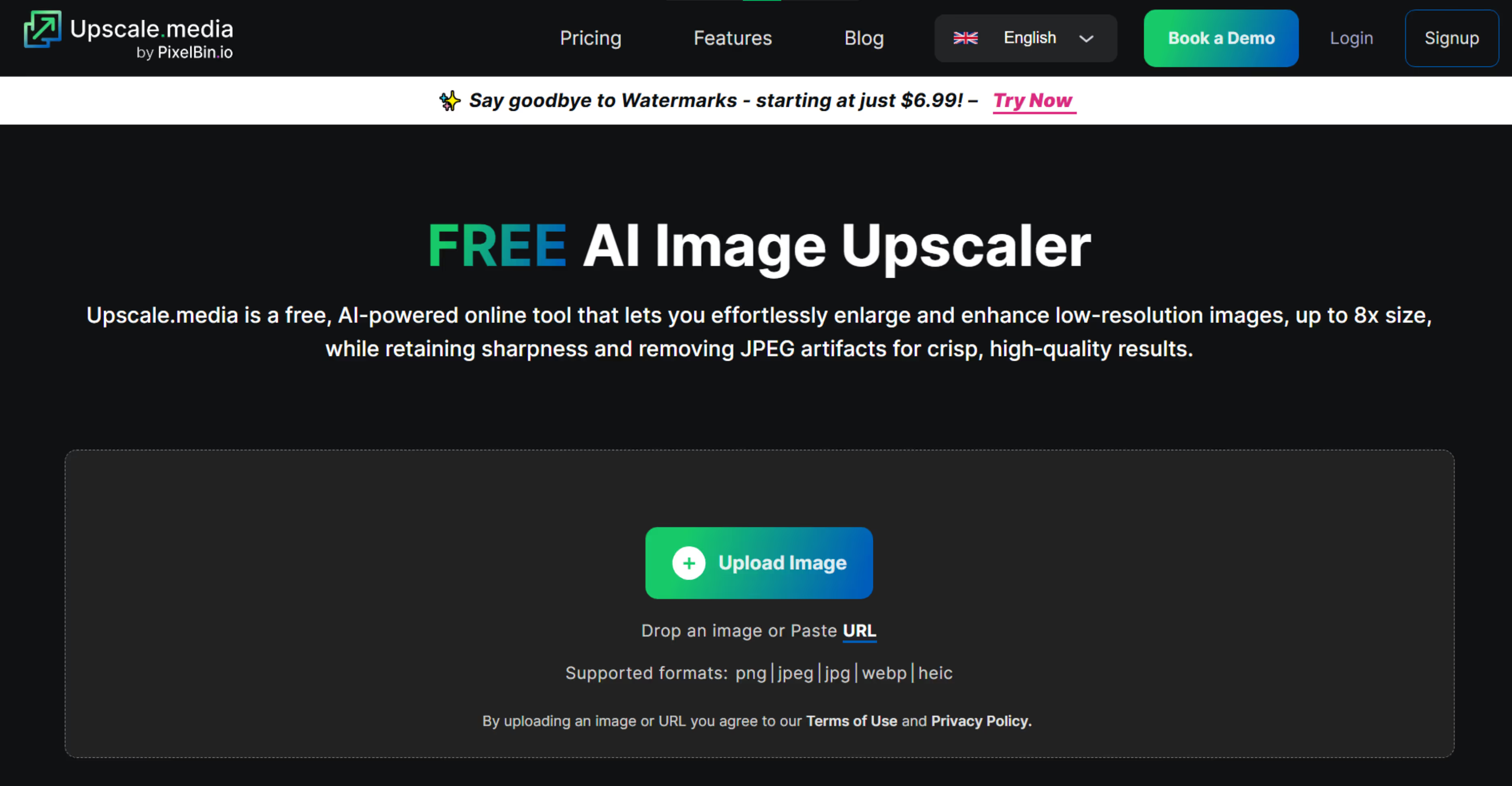
Step 2: Upload your image in PNG, JPG, or JPEG, HEIC & WEBP formats.
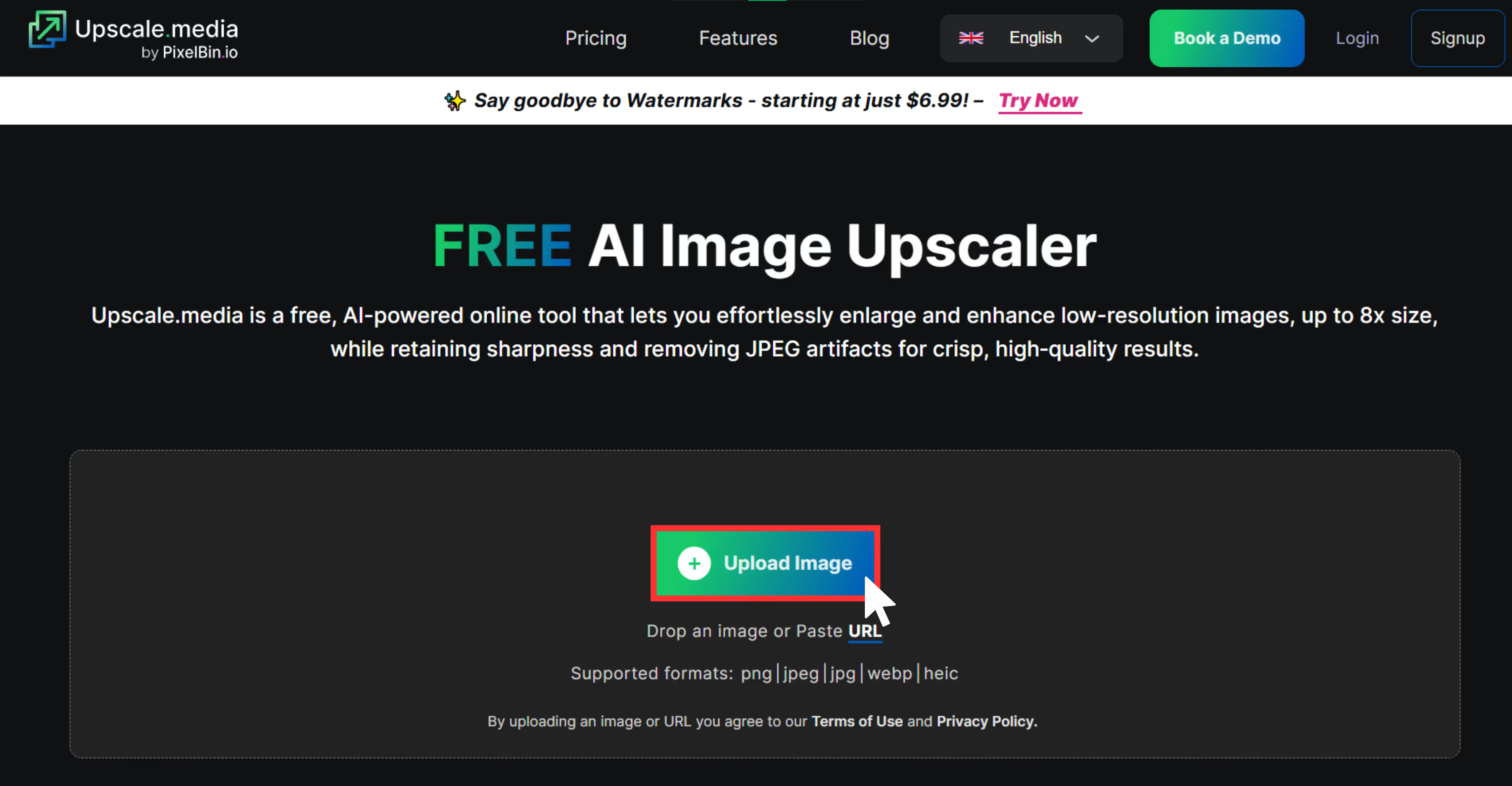
Step 3: The AI algorithms automatically upscale the image in 2x, 4x, or 8x scale size.
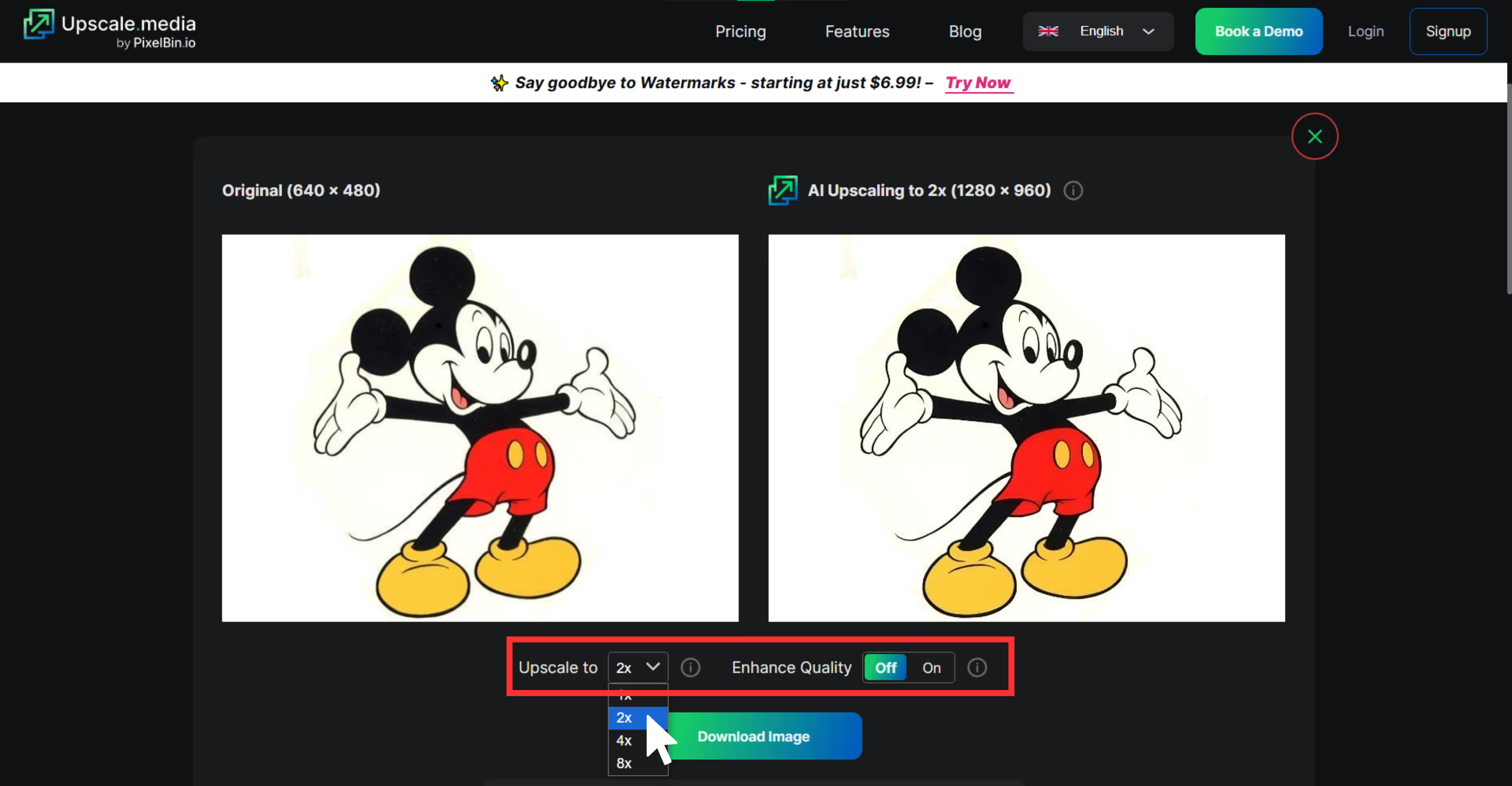
Step 4: Download your upscaled image instantly.
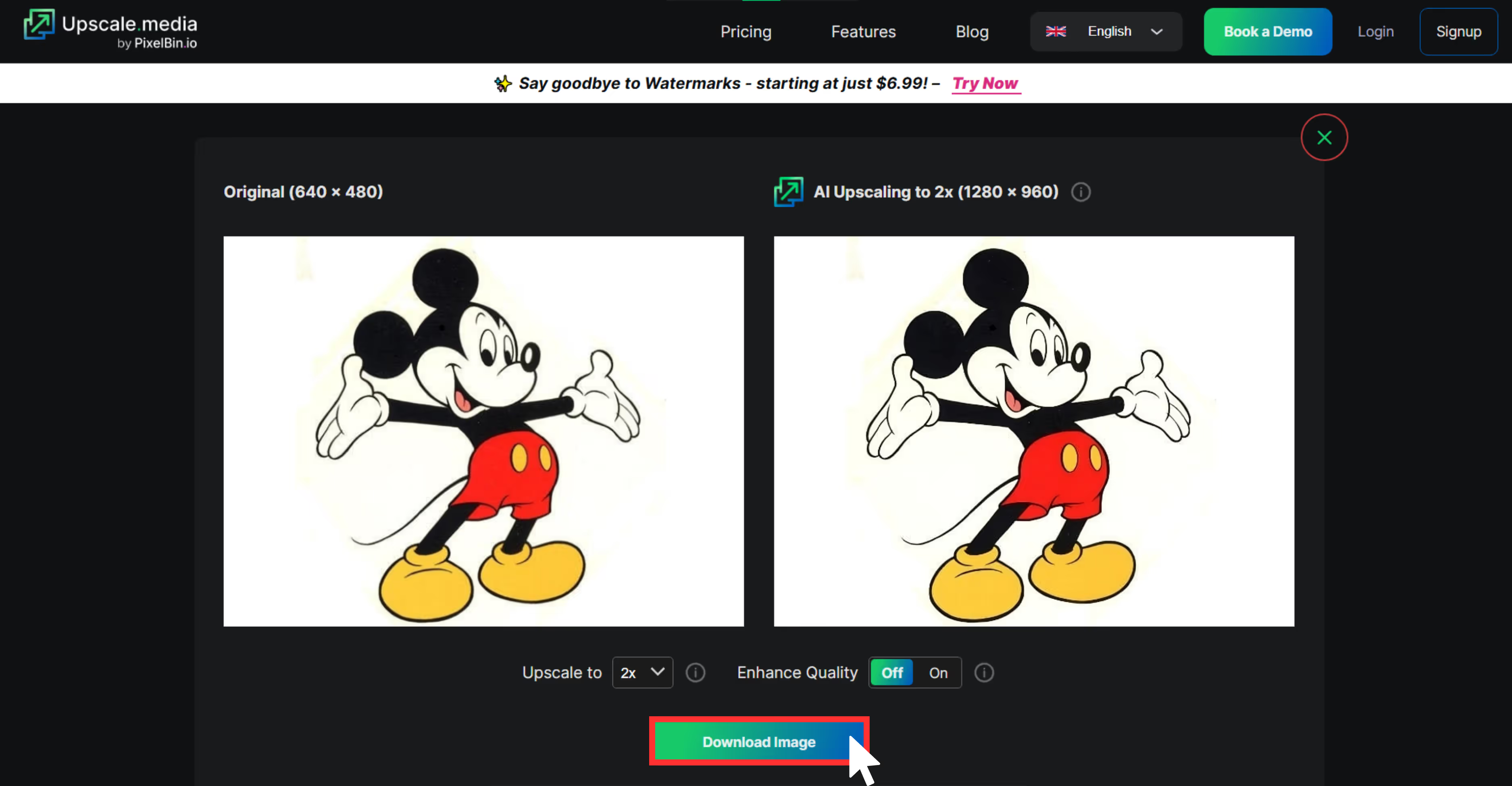
3. Picsart

After trying a few image upscalers, I came across Picsart. This is not just an image editor, it's AI upscaler that offers a lot.
I used it for an illustration that I wanted to print, and the results were very balanced. It kept the brush lines sharp and the colors vibrant, which is important for artistic images. Also, if you want to make more edits afterward, Picsart has everything in one place. What I liked about the tool;
- Supports JPG and PNG image formats.
- Free use available.
- Web-based, no software installation needed.
- Free upscaling available for up to 4x.
- Easy and simple interface.
Steps to upscale the image in Picsart
Step 1: Go to the Picsart Image Upscaler page Picsart.
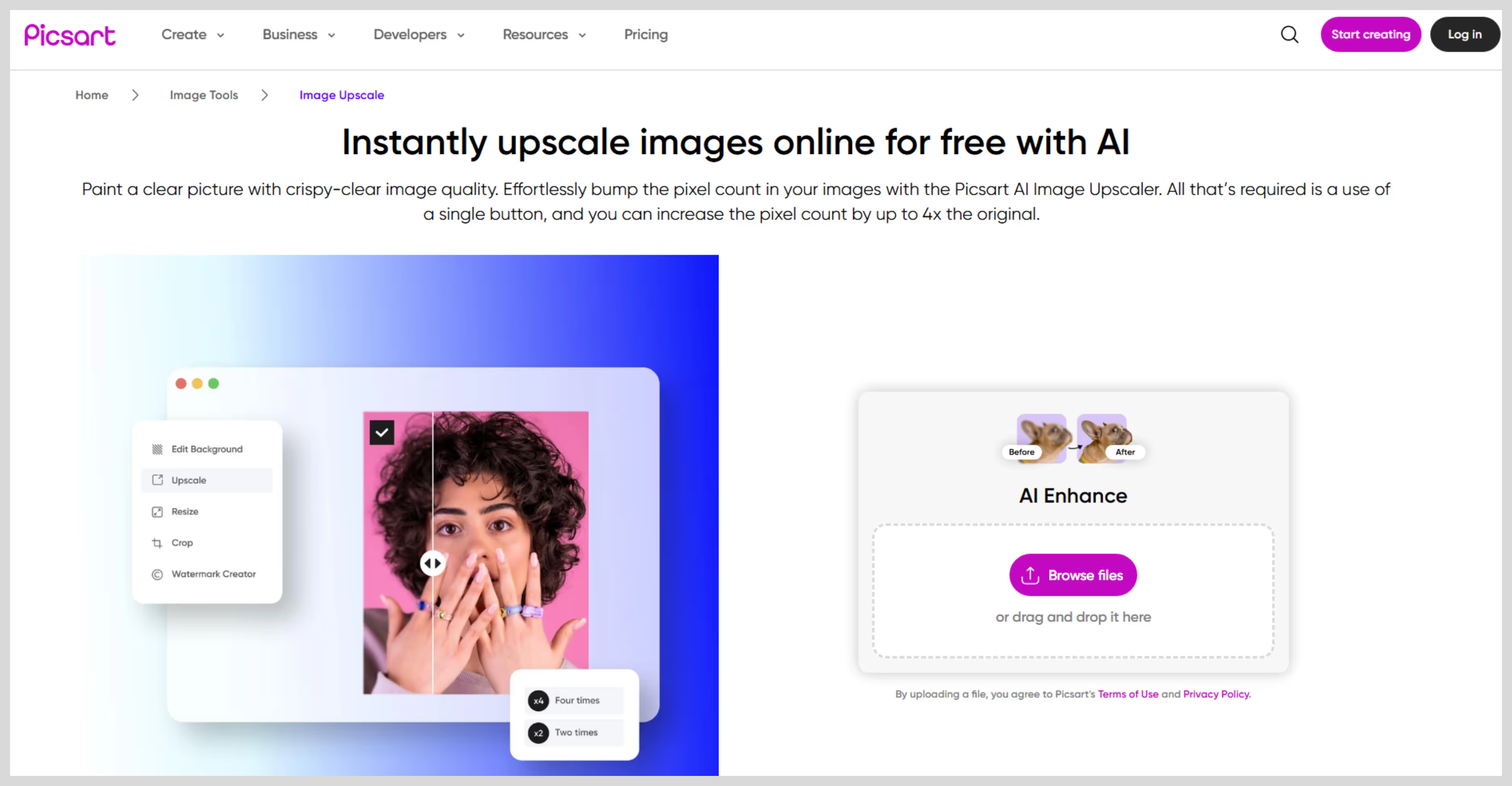
Step 2: Upload your image by clicking on the “Upload an image” button.
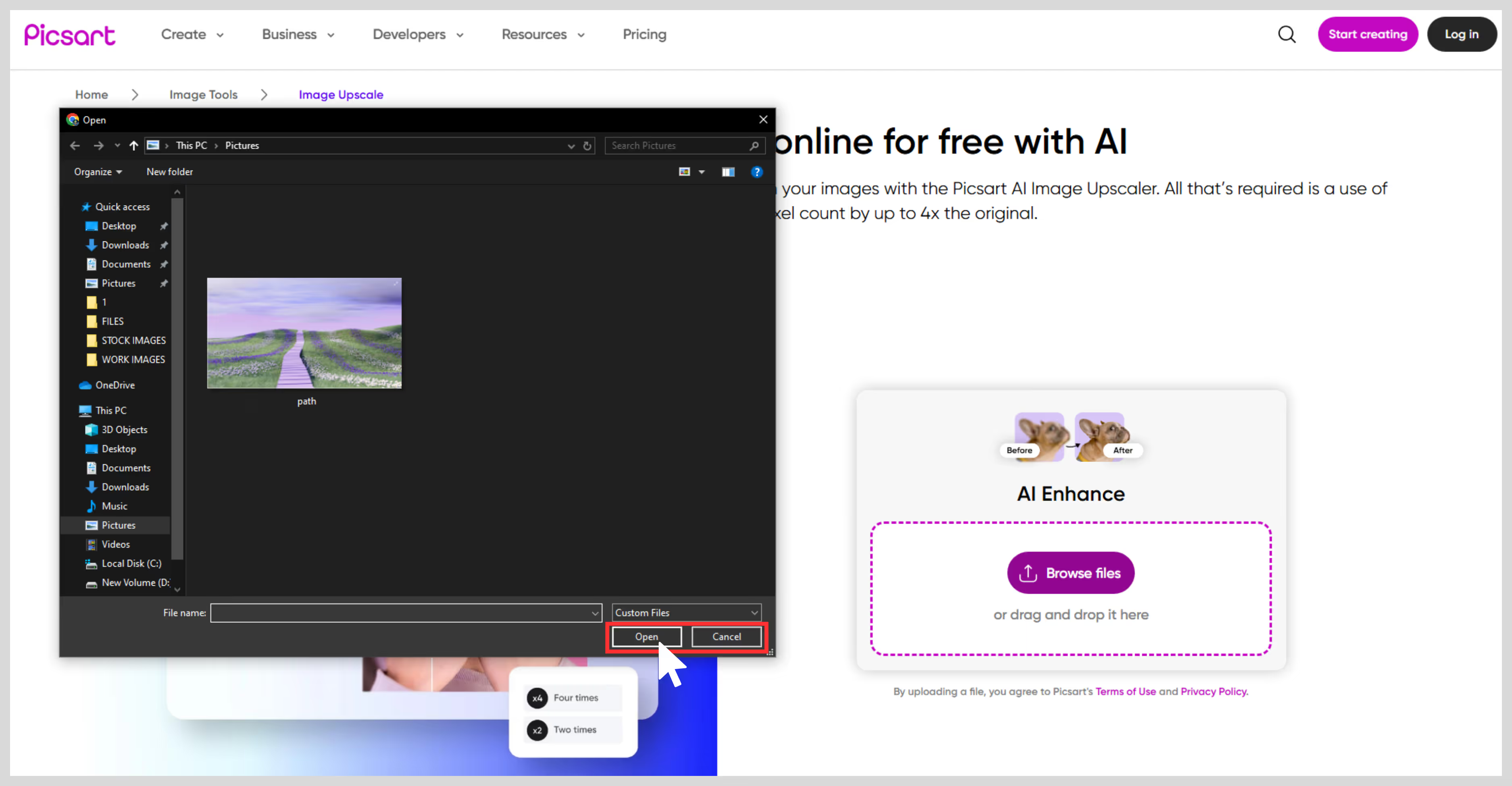
Step 3: After uploading, AI starts enhancing automatically and removes blur, sharpens the edges, and adds pixel count.
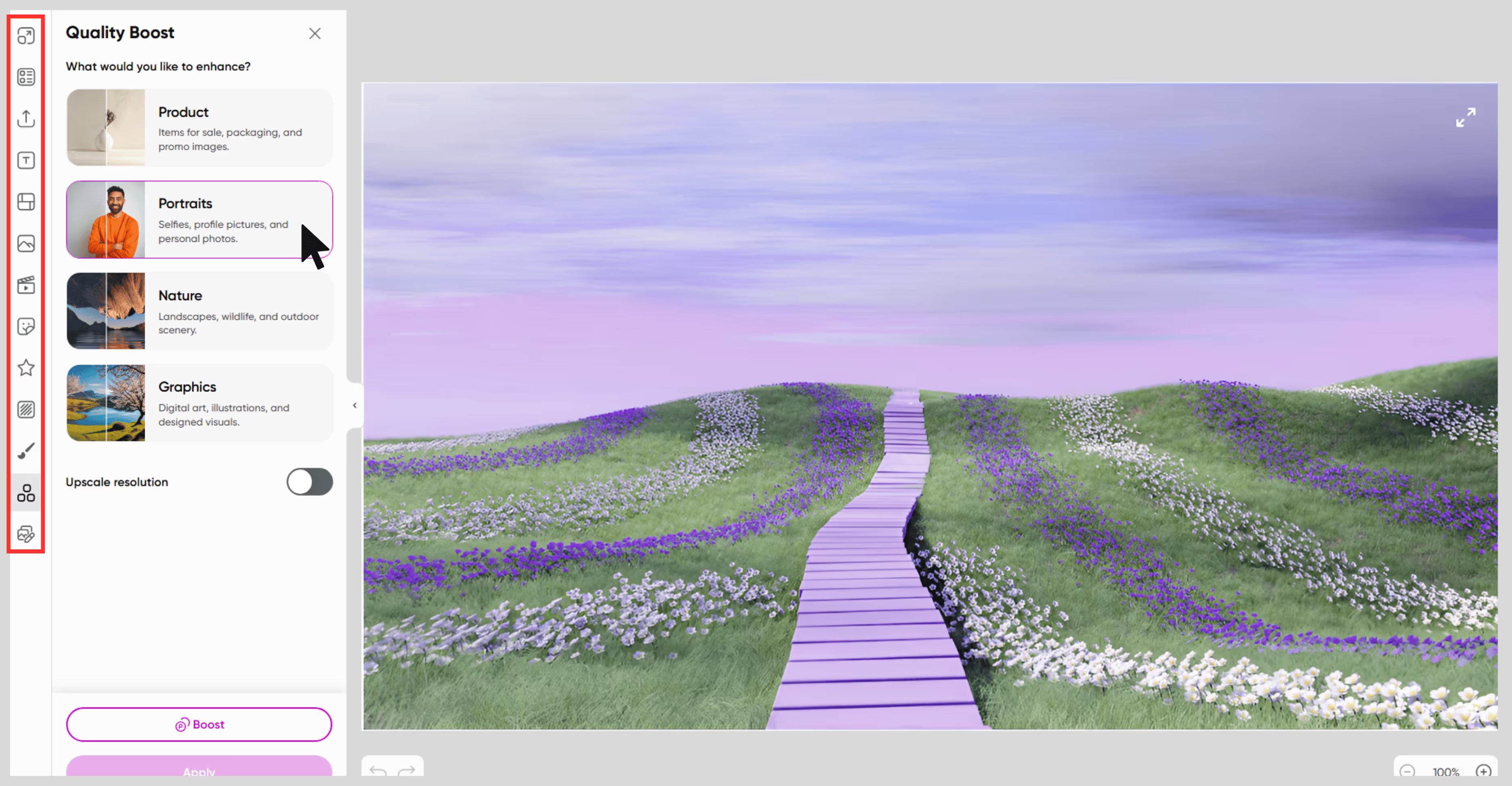
Step 4: Once done, just download it.
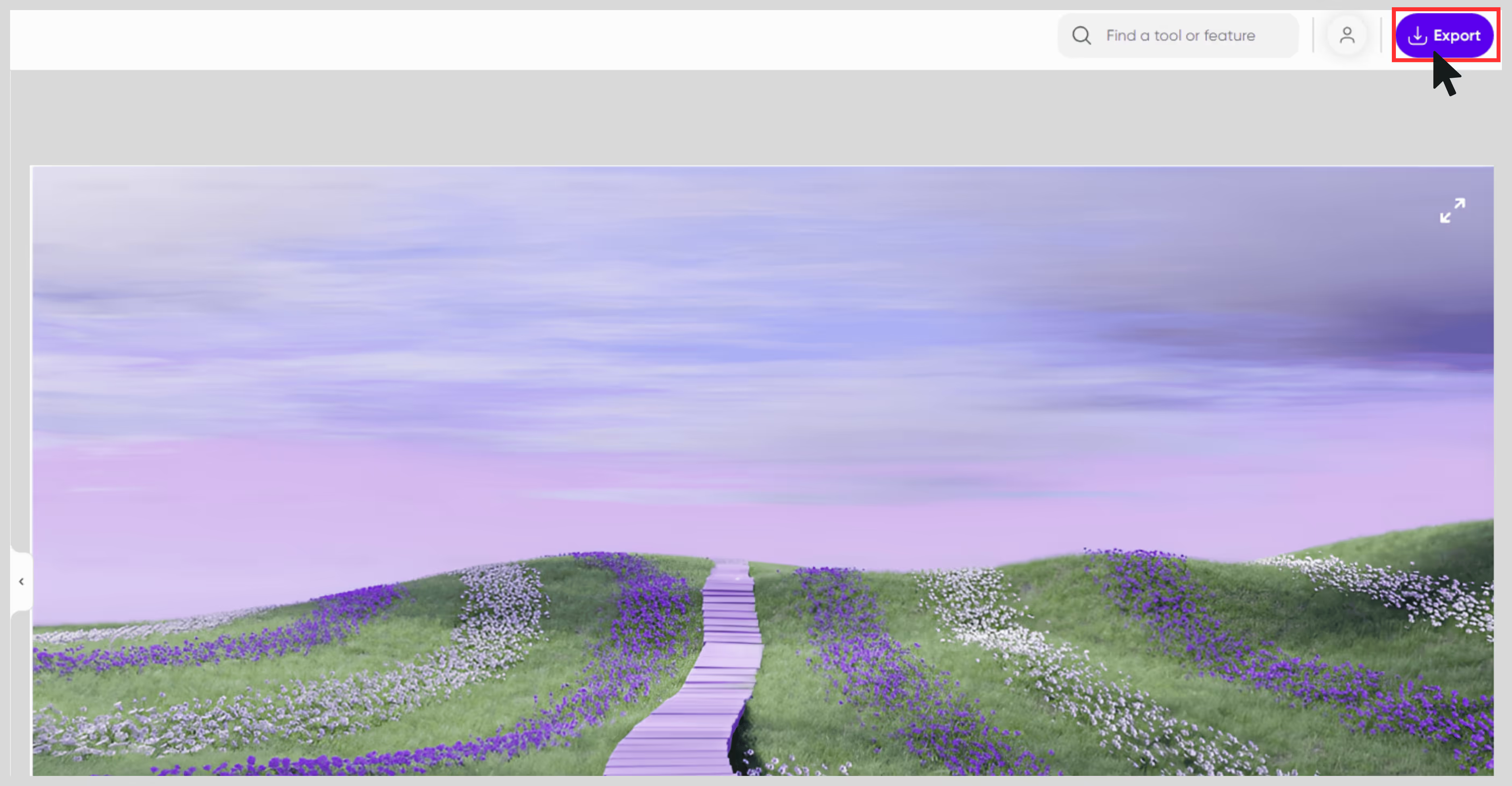
4. ILoveIMG

If you’re looking for a basic, no-login-needed AI tool to upscale an image to high resolution, ILoveIMG’s Image Upscaler is one of the best. I tested it on a low-resolution image with some visible compression artifacts and soft edges.
After running it through the tool, I chose the 4x upscale, the clarity improved a lot—edges were cleaner, the image looked less pixelated, and some finer details stood out better. What I liked about the tool;
- No sign-up or account needed—you can get started instantly.
- Super clean interface, with just the basics.
- Decent quality boost, especially for compressed or pixelated images.
- Free to use, with no watermark on the download.
Steps to upscale the image in ILoveIMG
Step 1: Go to ILoveIMG.
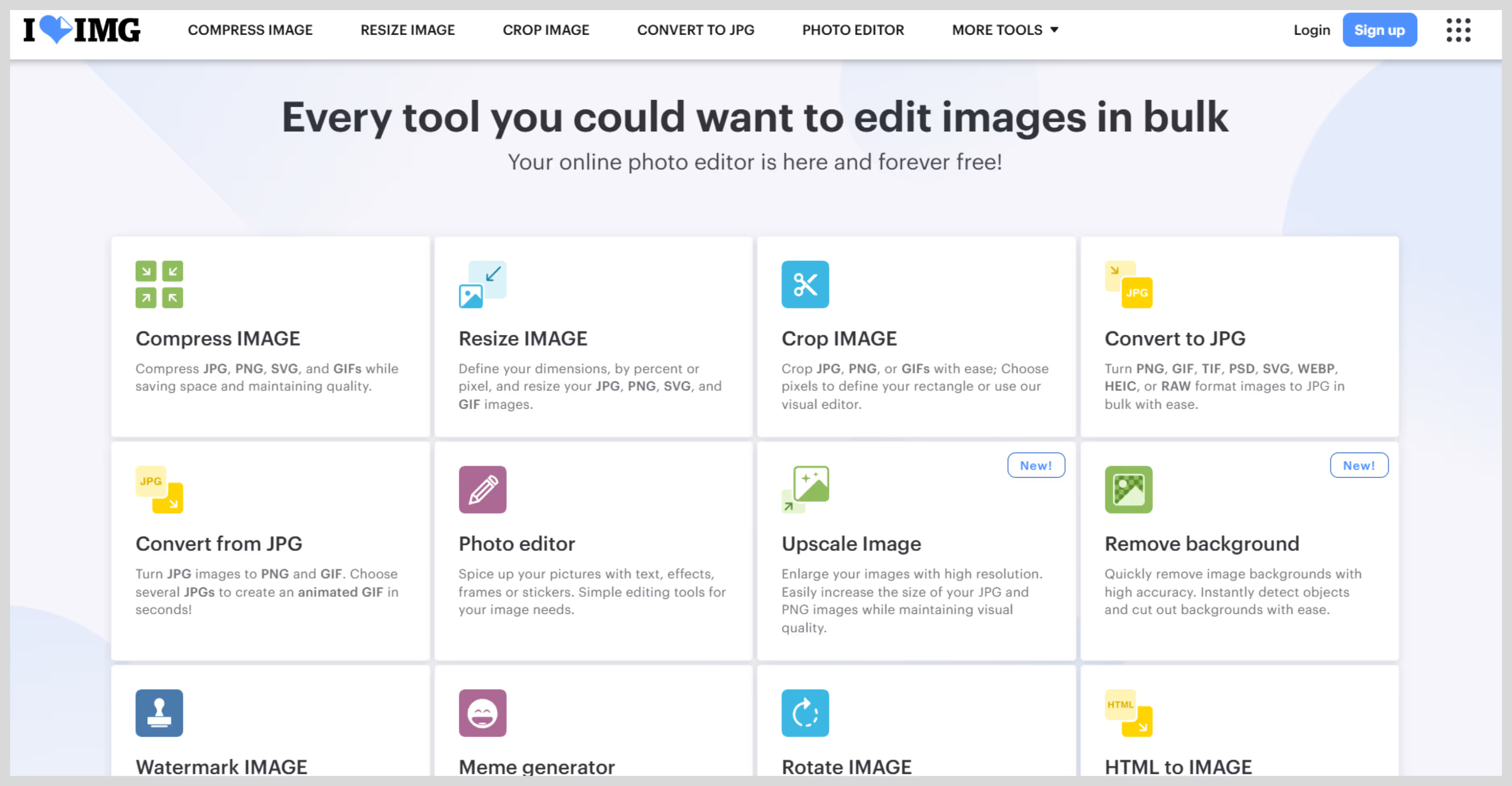
Step 2: Select “Upscale image option.”
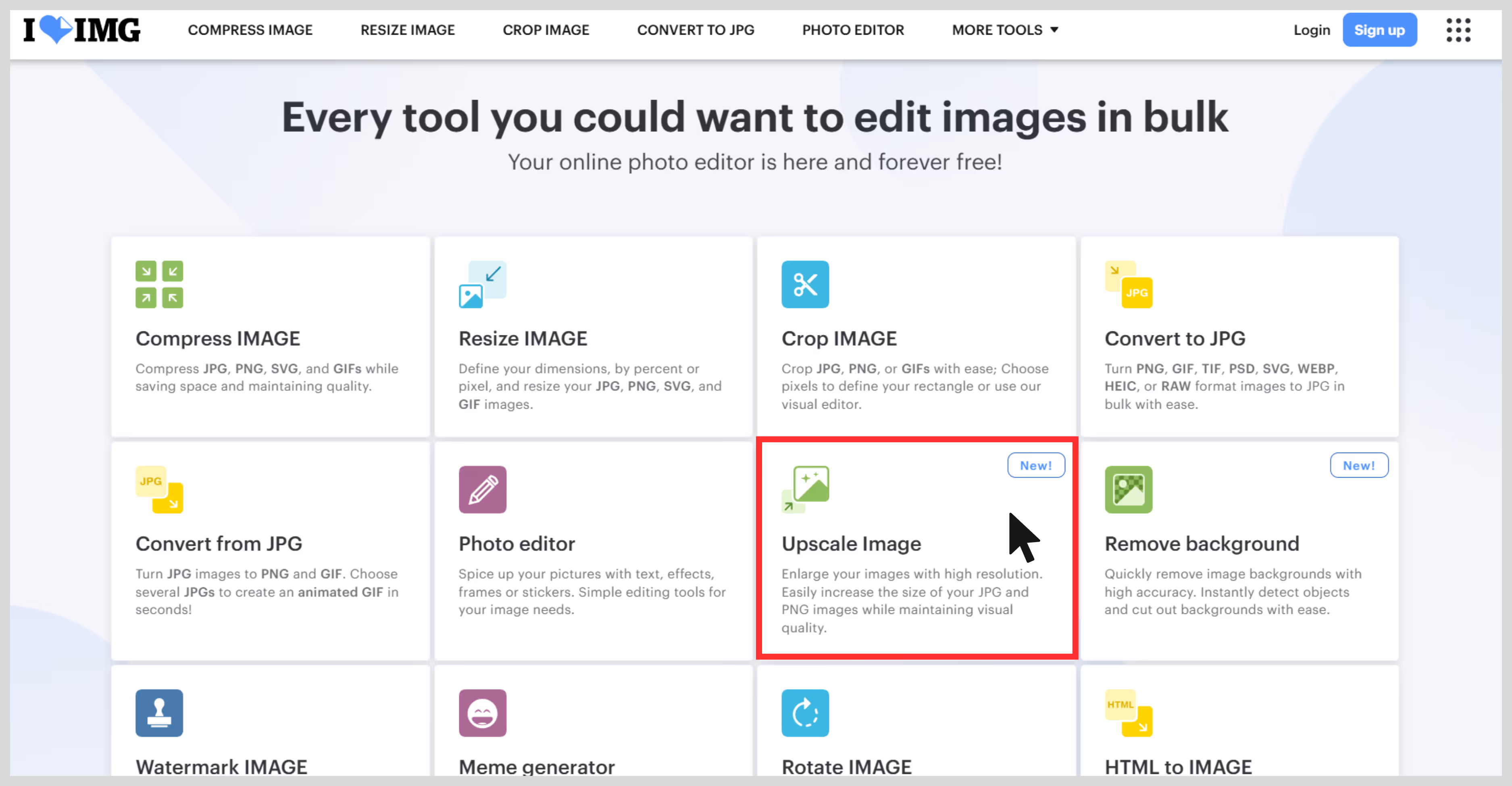
Step 3: Click “Select Image”– or drag and drop your image into the box.
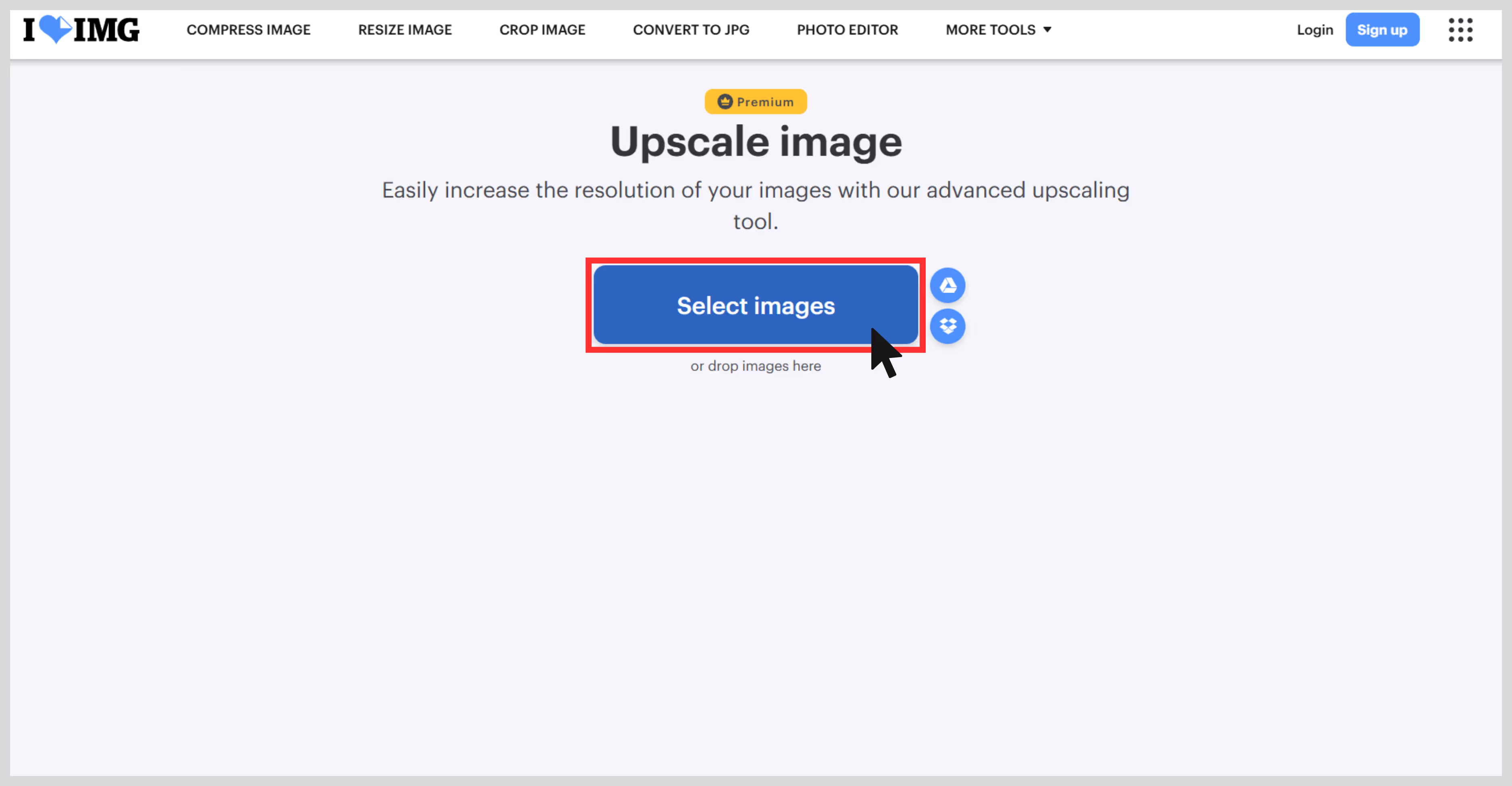
Step 4: Choose the Upscale Factor Options: 2x or 4x. I have used 4x to upscale the image to 4K resolution.
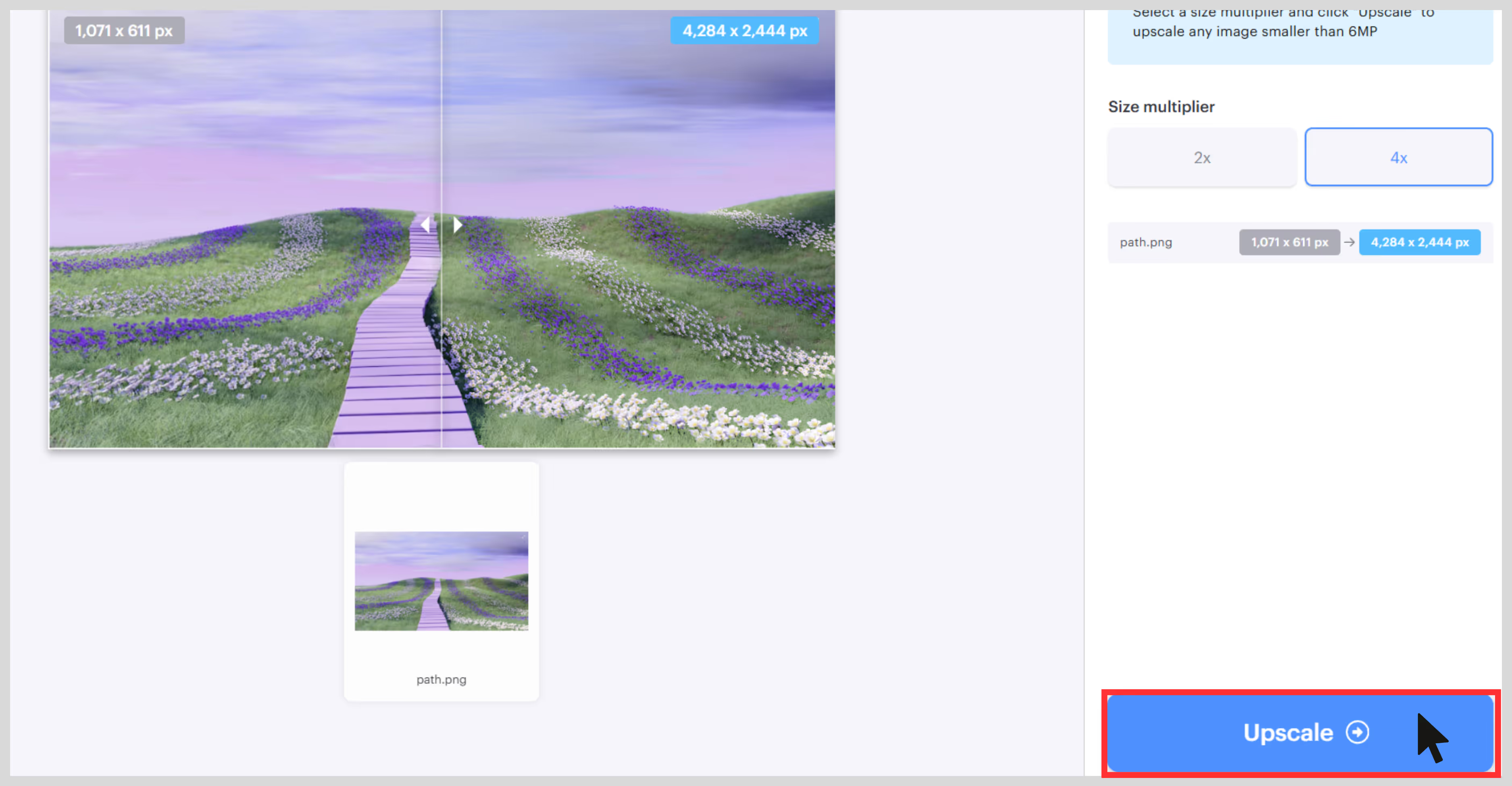
Step 5: Click “Upscale”, once the image is ready, you can preview the results by moving the before and after sliders.
.avif)
Step 6: Download the result. It auto-generates a download link, no login required.
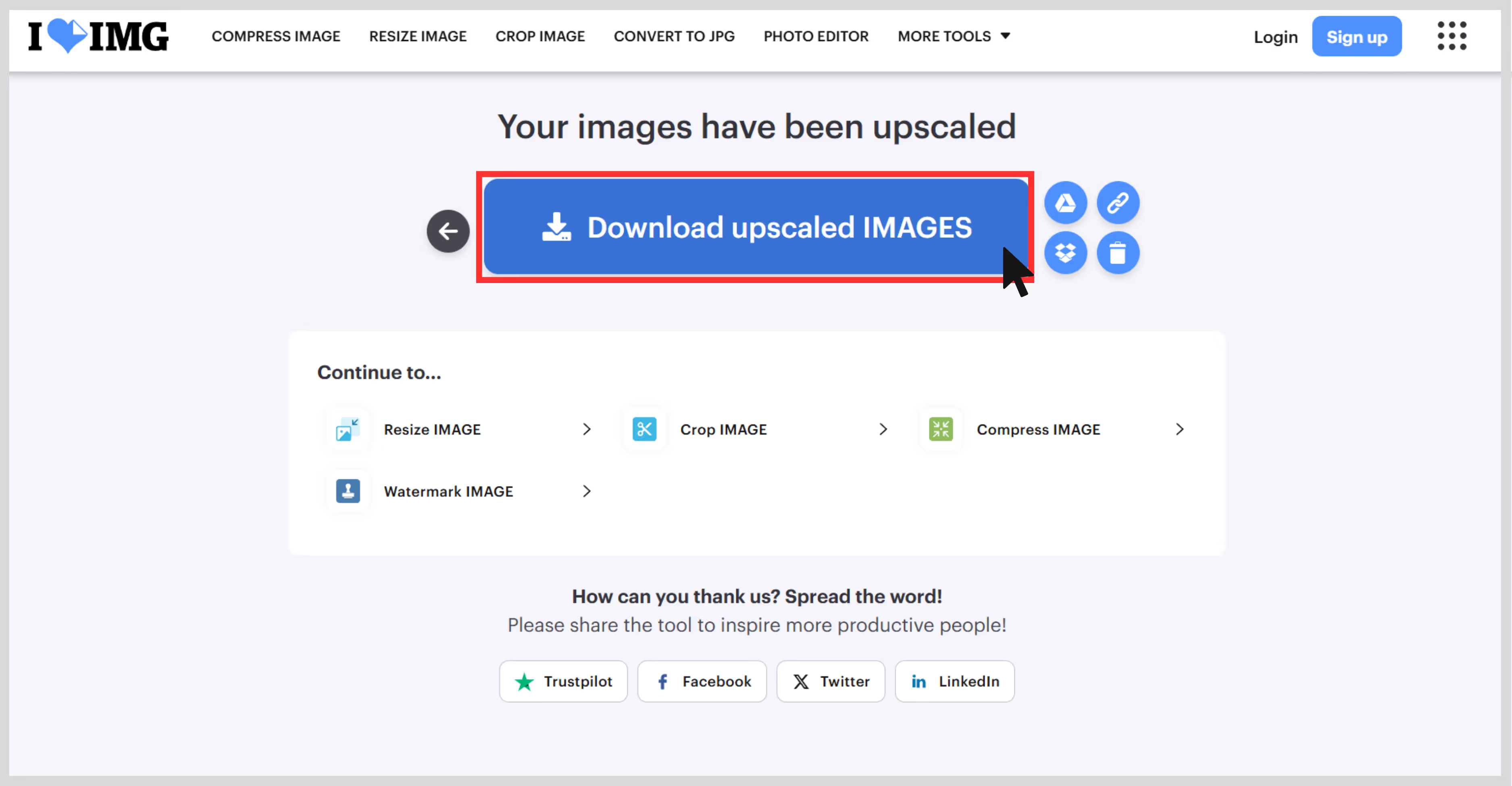
5. Clipdrop by Jasper

When I tested Clipdrop’s Image Upscaler by Jasper, I used an old and small-sized image. But after processing it through Clipdrop, the image came back looking noticeably sharper, the text was clearer, and even the subtle textures on the cover popped back to life.
What stood out immediately was the clean handling of the subject and the background textures. It didn’t overdo the enhancements, which is rare with AI tools that often go too far. What I liked about the tool;
- AI-powered algorithms not only enlarge but also add pixels.
- Upscales for free up to 2x.
- Supports JPG and PNG formats.
- Free tier is available with a watermark.
- Beginner-friendly interface.
- Mobile friendly.
Steps to upscale the image in Clipdrop
Step 1: Go to the Clipdrop image upscaler by Jasper.
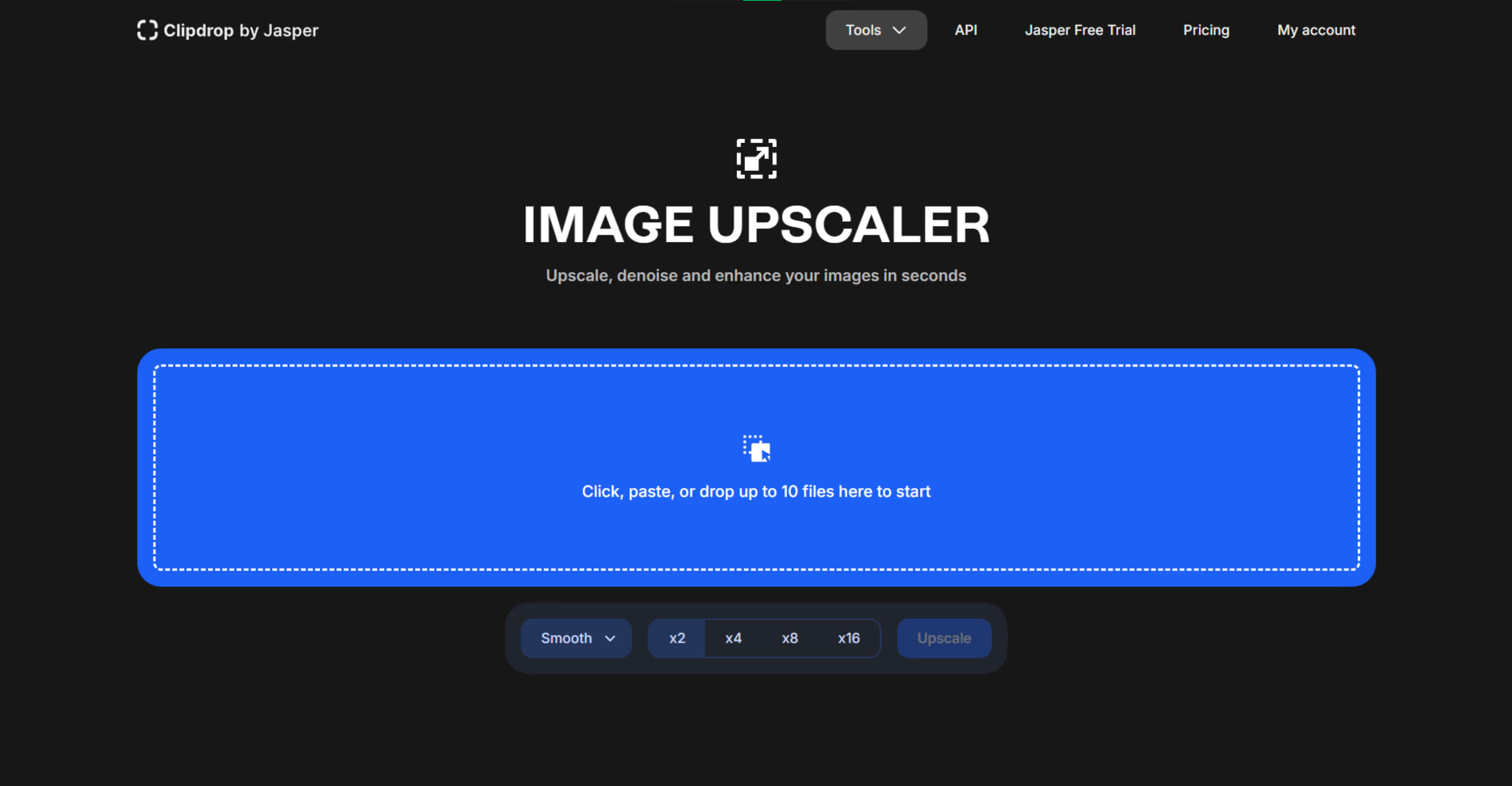
Step 2: Click on the blue box to upload the image or paste the URL. You can add up to 10 files at a time.
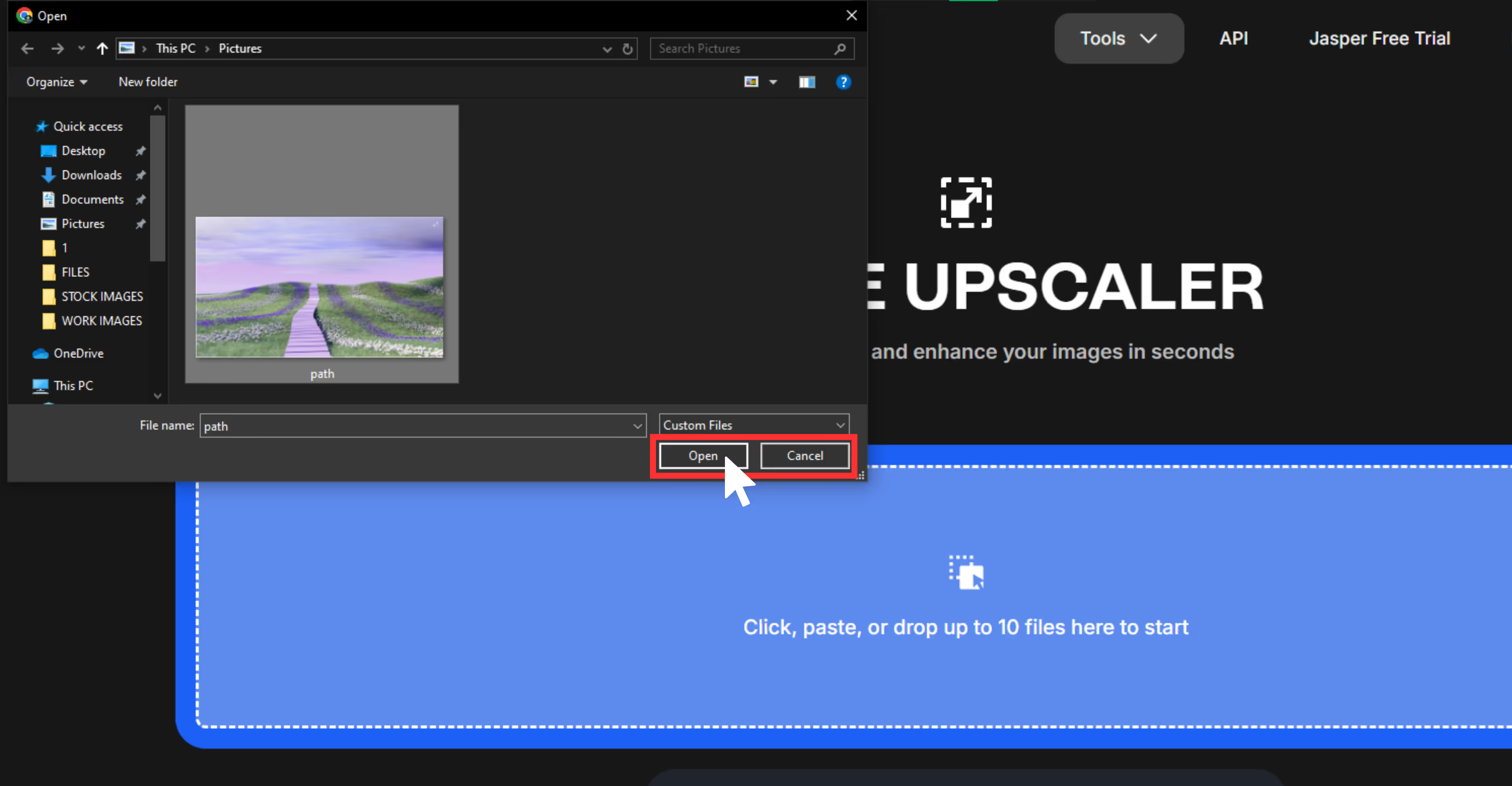
Step 3: You can select adjustments like a smooth or detailed image, and then select the image scale size. You can choose 2x for free, and the others are a feature of the paid version.
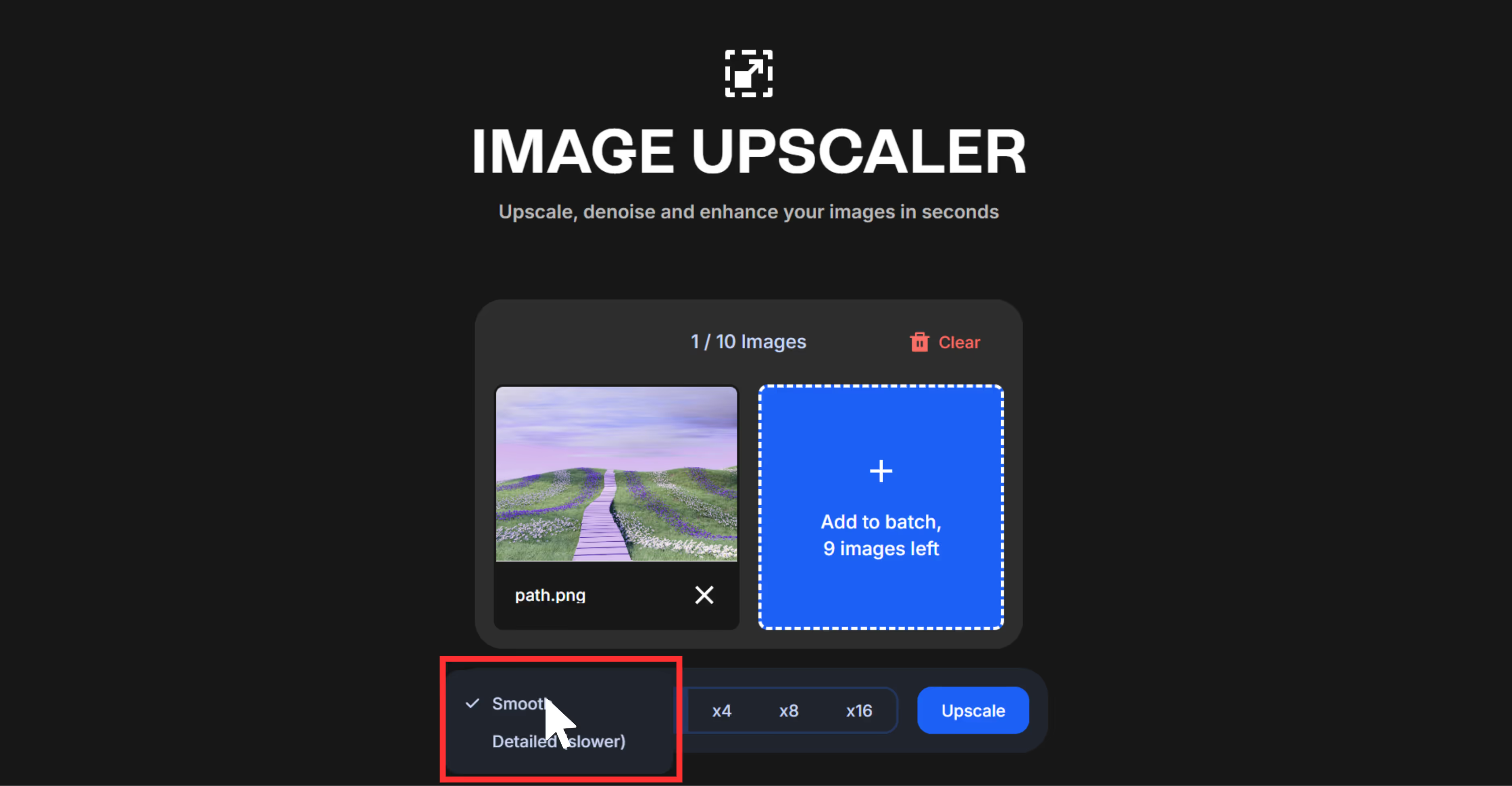
Step 4: Click on Upscale, and you will need to sign up, and the tool will do the rest.

Step 5: Download the image; if you are using the free version, it includes a watermark.
.avif)
6. UpScaler

If you are looking for a simple and easy upscaling solution, then this tool is one of the best. When you open the tool, you will find a simple interface with no confusing menus.
The best thing I liked about the tool is that you can choose image types like general, anime, or facepro with easy upscale sizes of 2x, 4x, 6x, and 8x. And you can also get 5 credits as a sign-up bonus. What more I liked about the tool;
- AI-based algorithms for improved quality while upscaling.
- Special modes of input image types like anime and facepro.
- Fast processing within 10 to 40 seconds.
- No software installation required.
- Easy format download of JPEG, PNG, WEBP, HEIC, BMP, PDF.
Steps to upscale the image in UpScaler
Step 1: Go to UpScaler, and you don't have to download the software.
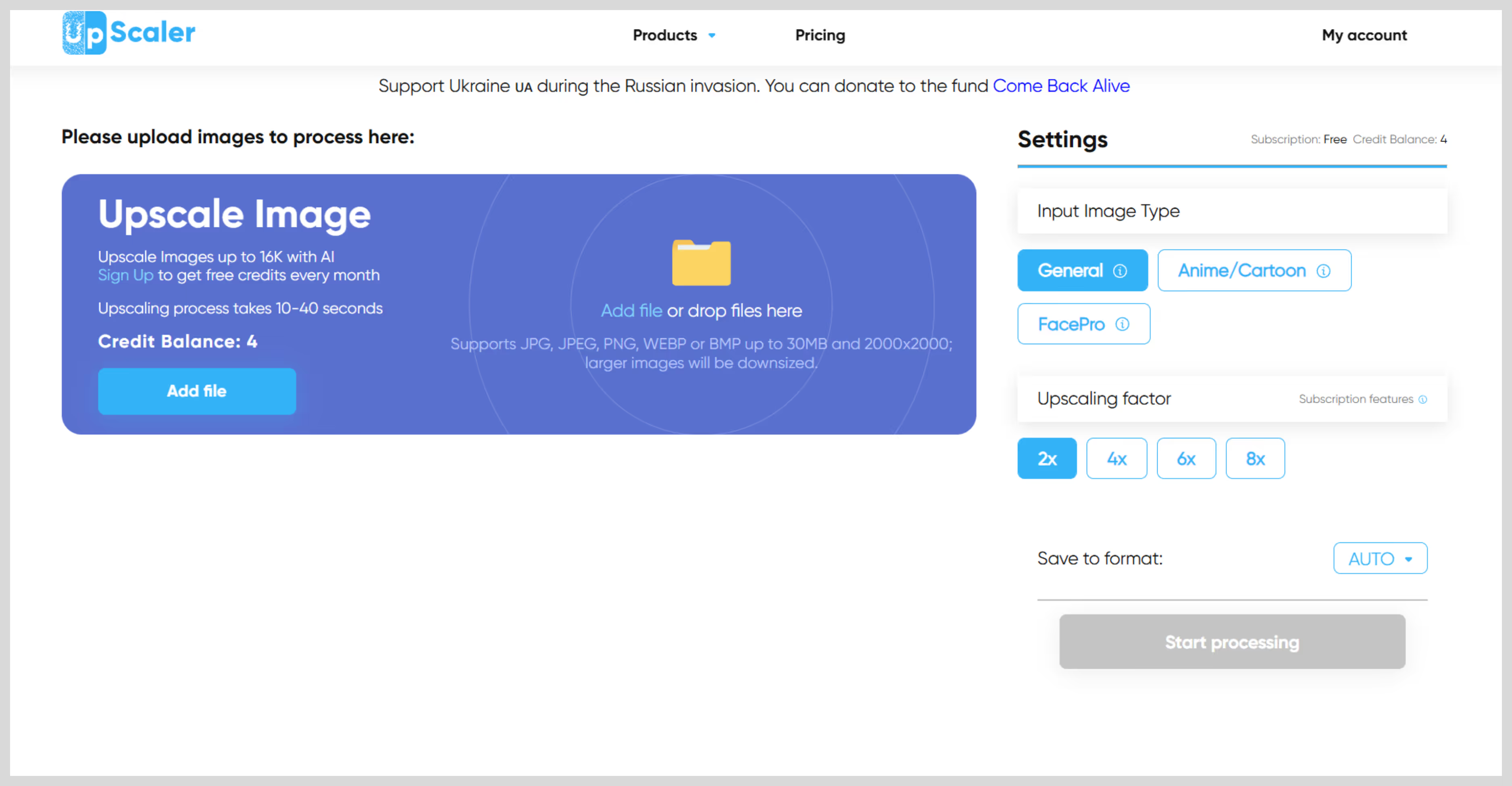
Step 2: To upload an image, click on “Add File” [The tool supports JPG, PNG, WEBP, BMP, max 30 MB, 2000×2000 on free].
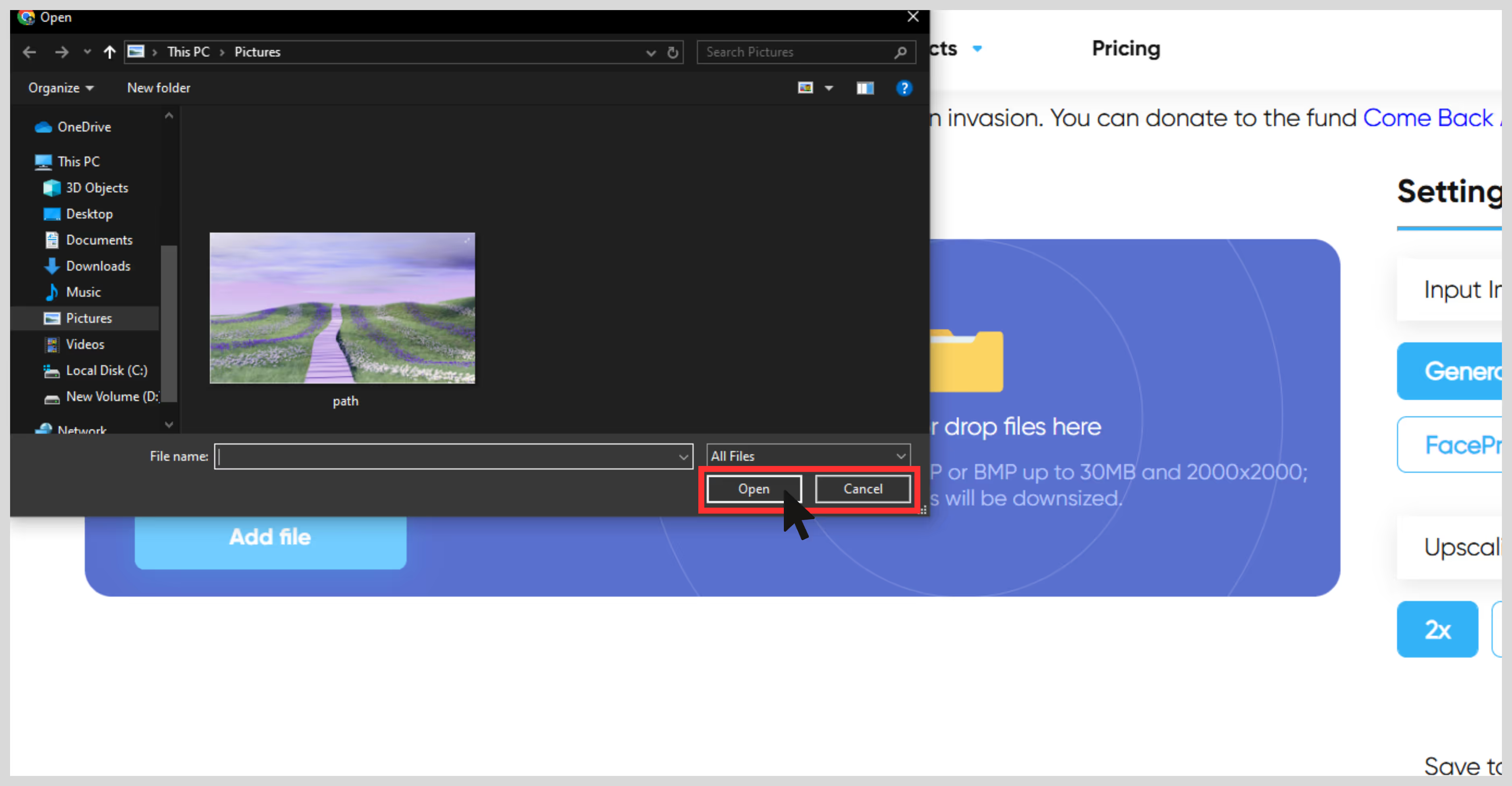
Step 3: Choose the upscaling factor within 2x to 8x.
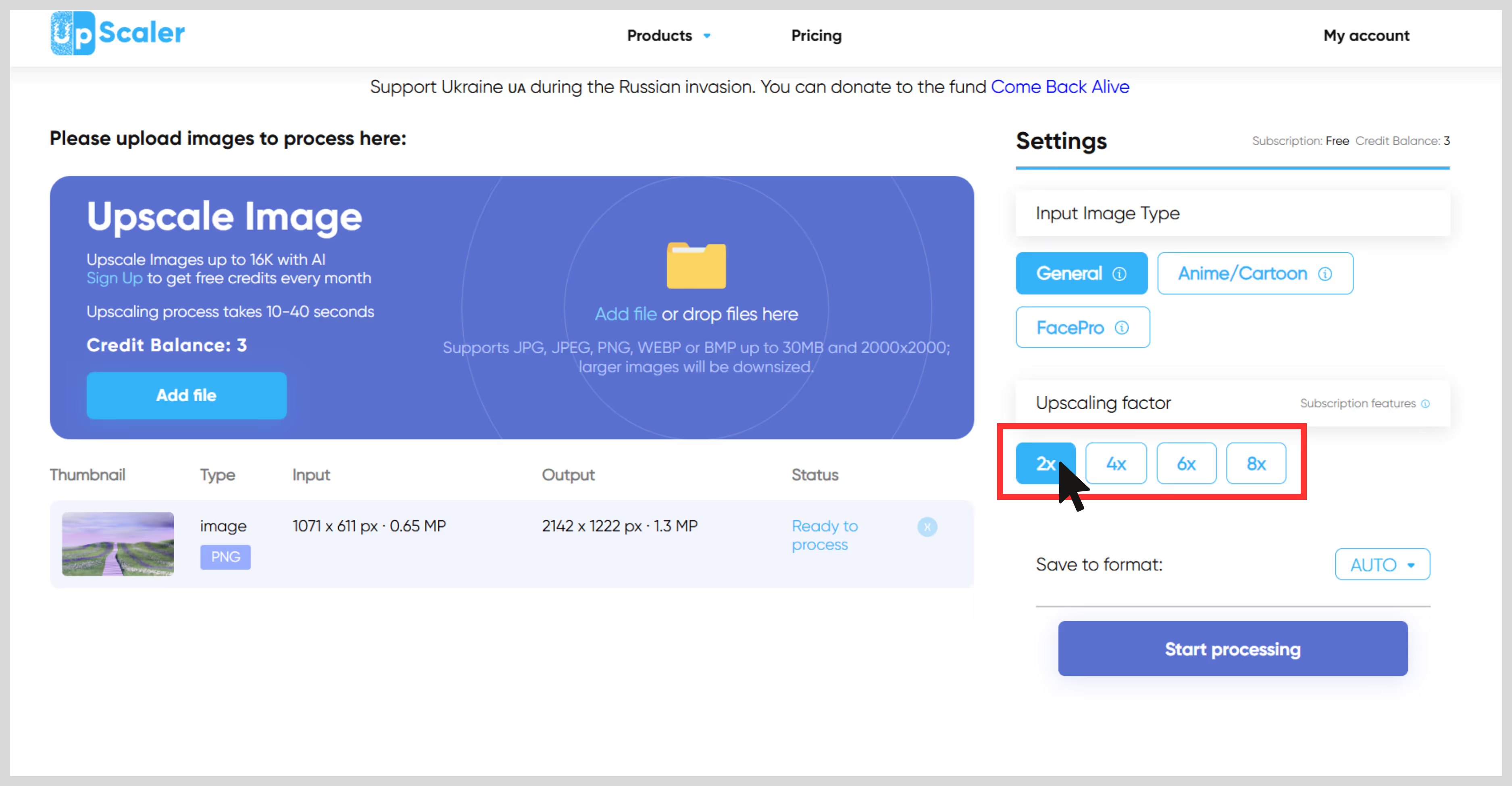
Step 4: Save to any preferred format like JPEG, PNG, WEBP, HEIC, BMP, or PDF.
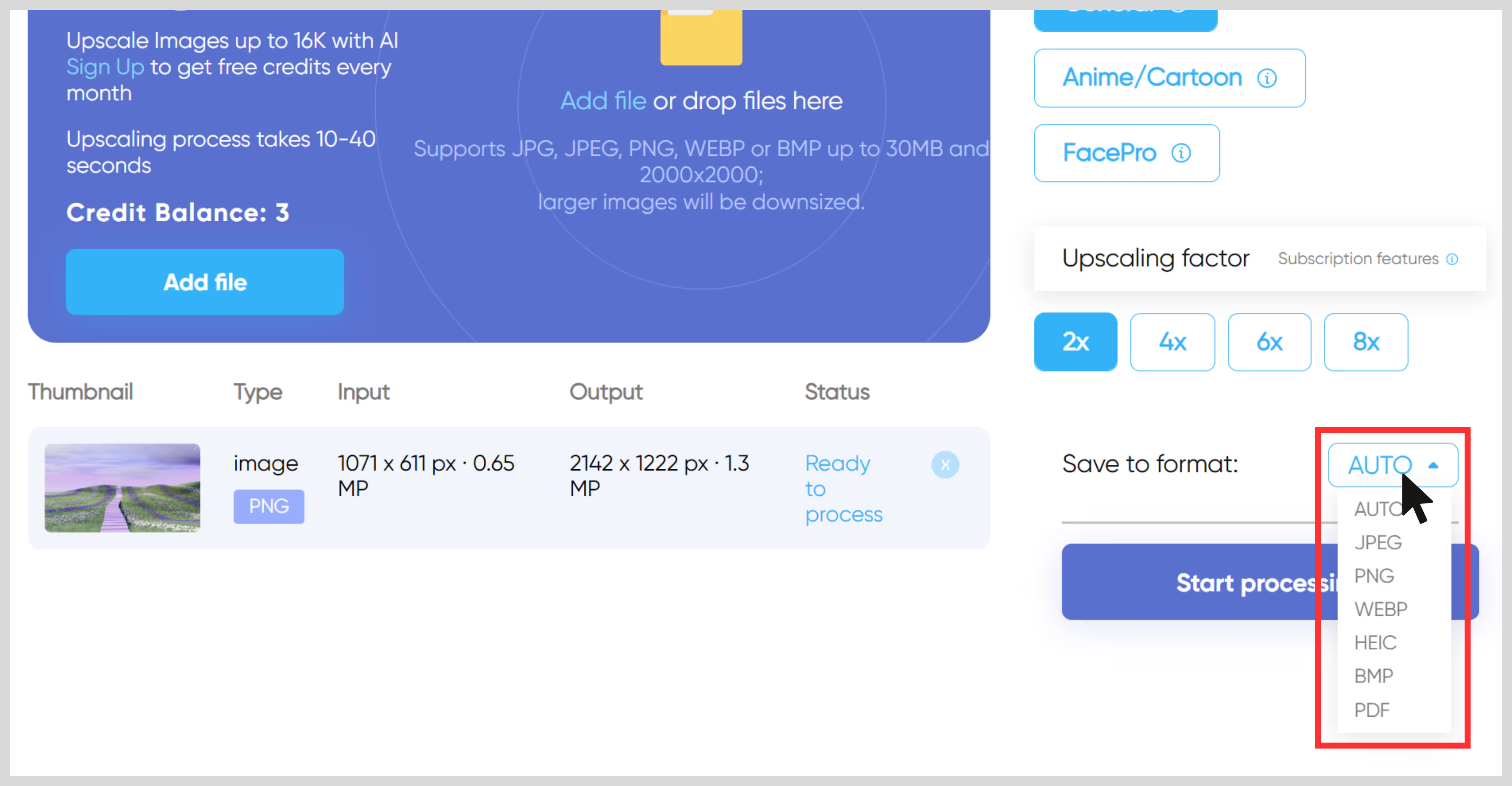
Step 5: Click on start processing, and your image upscaling will be done within 40 seconds.
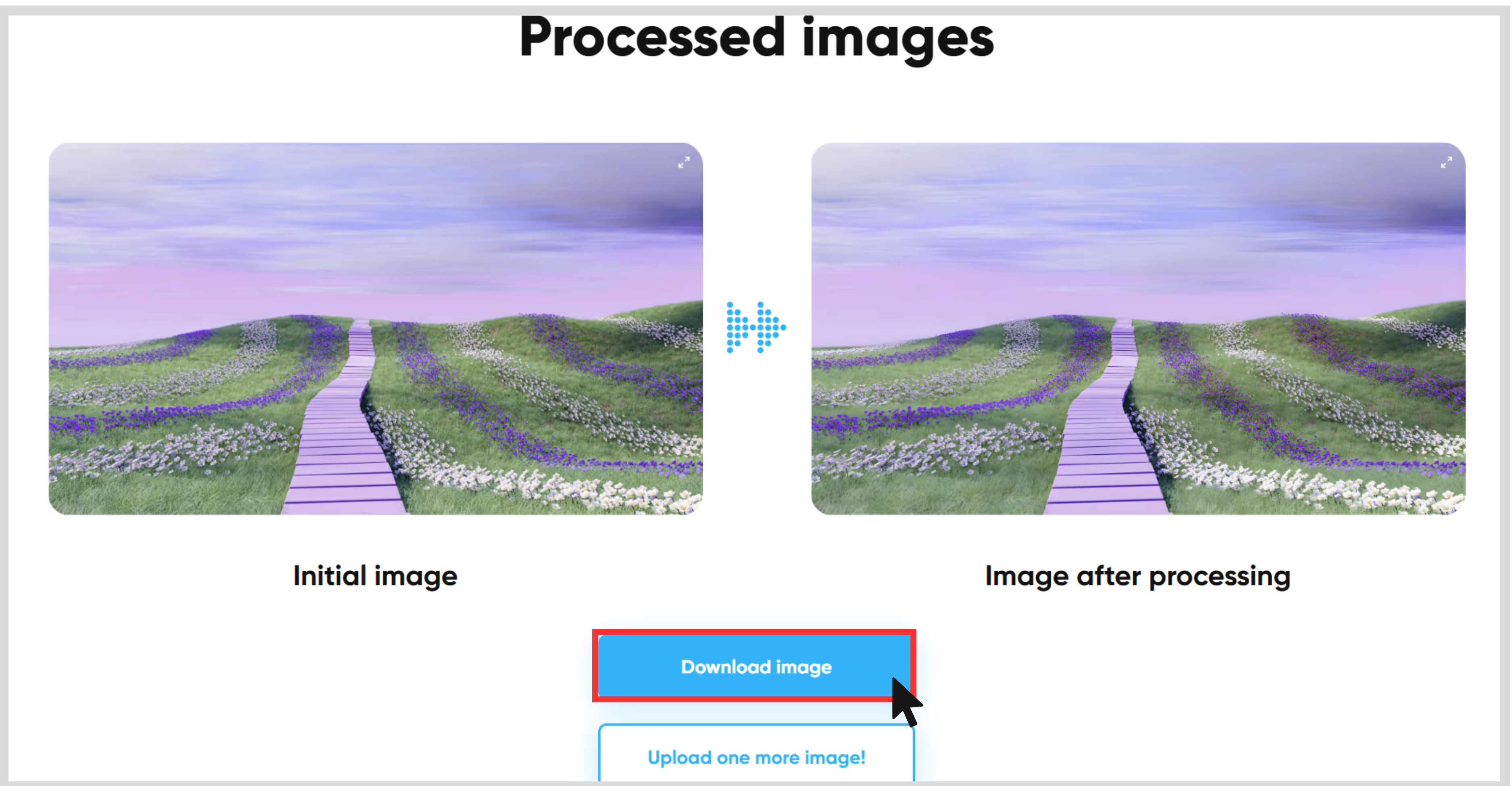
Final thoughts
Image upscaling is an important method to enhance the quality of the image by adding details. AI tools have made it possible to enhance low-resolution images in seconds without the need for professional tools or design skills.
Among all the tools I tried, Pixelbin stood out for its speed, clarity, and affordability. Pixelbin provided consistently sharp results. It's one of the simplest, fastest, and most user-friendly tools that provide the best results.
Every aforementioned tool excels in its own way, like Upscale.media, but ultimately, the right selection of an AI tool depends on your workload. For a reliable choice, Pixelbin is the tool to make your images stand out.
FAQs
To upscale an image means to increase its dimensions and resolution, making it larger and ideally clearer without losing visual quality.
Use AI-powered upscaling tools like Pixelcut, Upscale.media, or Pixelbin. These tools enhance sharpness, texture, and detail using machine learning, not just pixel stretching.
Yes! Most tools listed above, like Pixelbin, Pixelcut, iLoveIMG, and Upscale.media, offer free upscaling options without requiring subscriptions.
Yes. AI tools reconstruct missing details based on trained datasets, delivering significantly better results than traditional interpolation methods.
Use AI upscalers that can enhance resolution, sharpen edges, and reduce noise. Tools like Pixelbin, Clipdrop, or Picsart also offer enhancements like light correction and background removal.
It depends on your purpose:
- For print: 300 DPI at desired dimensions ( like for A4, A3).
- For web: 1080p or 4K resolution for a sharp visual appeal.
- For social media: Square formats (1080x1080) or vertical (1080x1920) with upscaled clarity.

.avif)


